On occasion, diagonal streets such as Broadway slice across New York’s rectilinear street grid creating opportunities for wedge-shaped buildings that seem to sail onto the streetscape with the grace and grandeur of an ocean liner. The Flatiron Building on Madison Square Park is easily the most iconic of the type, yet a century-plus years after the Flatiron rose at Madison Square, scores of acute-angled buildings stand in all boroughs of the city, with more still on the drawing boards.
The Flatiron Building is as well known for its unique shape as it is for its ornate Beaux-Arts facade of limestone, brick, and terra-cotta. But the facade has been hidden behind scaffolding for nearly six times as long as it took to construct the building. A major exterior renovation began in late 2019; then, in October 2023, the Flatiron Building's new owner announced that the interiors would be converted to residential. To that end, all 1,000+ windows in the building were replaced to meet residential standards, and thousands of terra-cotta pieces were meticulously restored.
In this article:
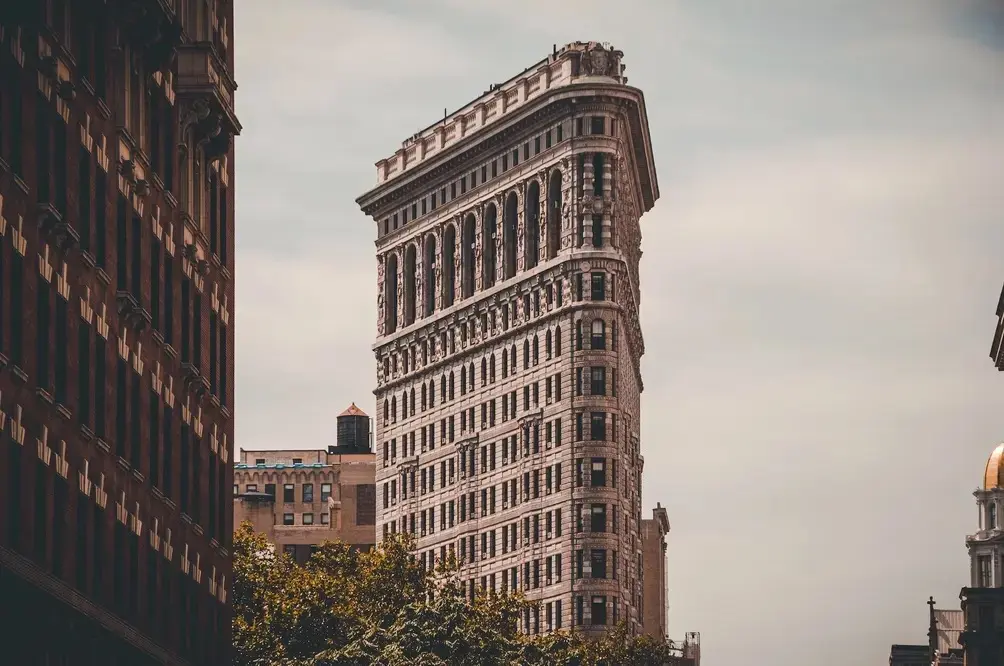 The often imitated but never duplicated Flatiron Building
The often imitated but never duplicated Flatiron Building
The gutted interiors are set to be replaced with 38 private residences designed by Studio Sofield, whose portfolio includes 111 West 57th Street, Beckford House and Tower, and the forthcoming 985 Fifth Avenue. Interiors are said to honor the Flatiron Building's legacy while incorporating contemporary elements inspired by original materials and details. Moreover, the unique shape of the building could allow for breakfast nooks in the narrow end.
The condos of the Flatiron Building will take their place across from Madison Square Park and among some of the most sought-after residential real estate in Manhattan. New development condominium Flatiron House recently sold out of sponsor units; the Grand Madison at the northern end of Madison Square Park is one of NoMad's most prestigious; and The Whitman Mansion has attracted celebrity buyers like Jennifer Lopez and Jeff Gordon over the years.
Most significant of all is Jeff Bezos' multi-unit purchase at the condo conversion 212 Fifth Avenue, which altogether would be the Downtown priciest sale at a total of $96 million. Other notable office conversions in the area include the former Toy Center at 10 Madison Square West, Armorie, and the Emmet Building. Additionally, a new concept was recently revealed for 245 Fifth Avenue.
The Flatiron Building's sales launch is anticipated for later this year, and the first move-ins are estimated for 2026. As we wait for one of New York City's most-anticipated sales launches, we look at the most attractive flatiron-style buildings throughout the boroughs, including residential buildings where people can move right in.
22 floors | 38 units | 1902 | Sales launch estimated for H2 2025
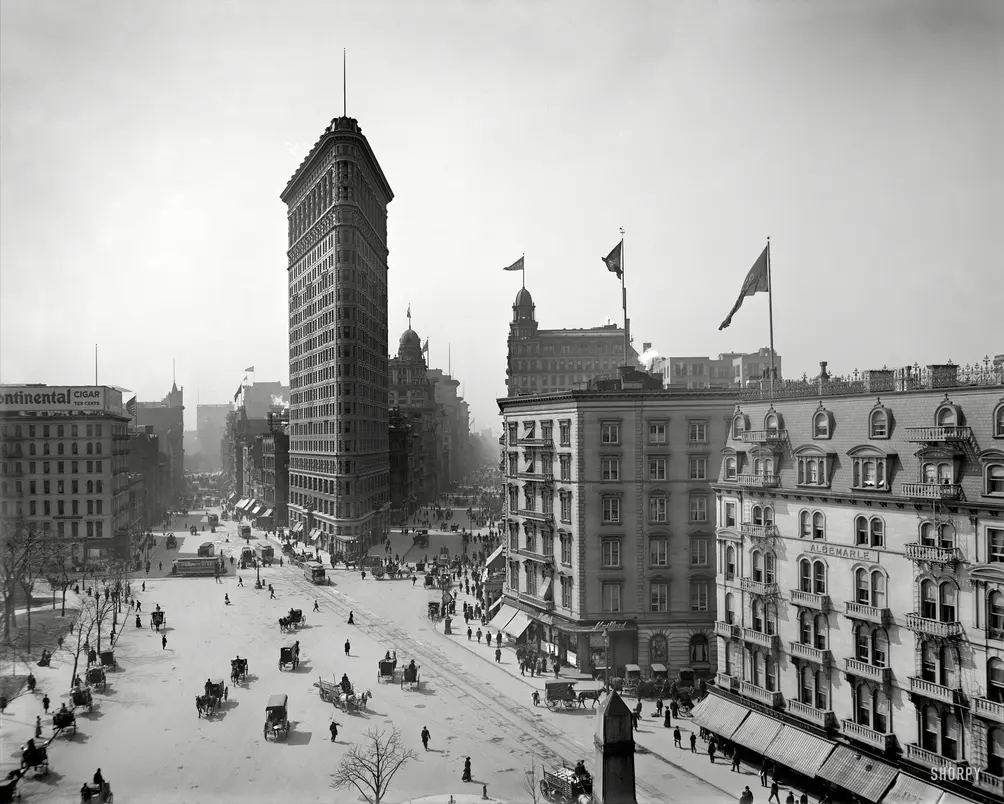 Circa 1903.
Circa 1903.
Even in the 21st century, few buildings in New York are as iconic and instantly recognizable as the Flatiron, but in 1902, it was a game-changer. The 21-story edifice was designed by Daniel Burnham, the tour-de-force Chicago architect that rose to global fame for his leading role in Chicago’s 1893 Columbian Exposition who once proclaimed: “make no little plans; they have no magic to stir men's blood.”
True to form, the 285-foot edifice at the junction of Fifth Avenue and Broadway was one of the city’s tallest buildings and easily the most dramatic. The structure was at once imposing and graceful, classical and daring, where the ornate opulence of the Beaux-Arts facade was matched by the sheer innovation of the slender steel frame beneath. Construction began in 1901, and the building opened to tenants in mid-1902.
Originally known as the Fuller Building, named after its developer-builder, the building’s kinship to a certain household appliance quickly earned it the “Flatiron” moniker, which, in time, extended to define the entire neighborhood south of Madison Square, as well as its spiritual successors around the world, including every “flatiron” listed below.
True to form, the 285-foot edifice at the junction of Fifth Avenue and Broadway was one of the city’s tallest buildings and easily the most dramatic. The structure was at once imposing and graceful, classical and daring, where the ornate opulence of the Beaux-Arts facade was matched by the sheer innovation of the slender steel frame beneath. Construction began in 1901, and the building opened to tenants in mid-1902.
Originally known as the Fuller Building, named after its developer-builder, the building’s kinship to a certain household appliance quickly earned it the “Flatiron” moniker, which, in time, extended to define the entire neighborhood south of Madison Square, as well as its spiritual successors around the world, including every “flatiron” listed below.
 Flatiron Building
Flatiron Building
#2 - One Times Square
25 floors | 1904 | Retail, advertisement
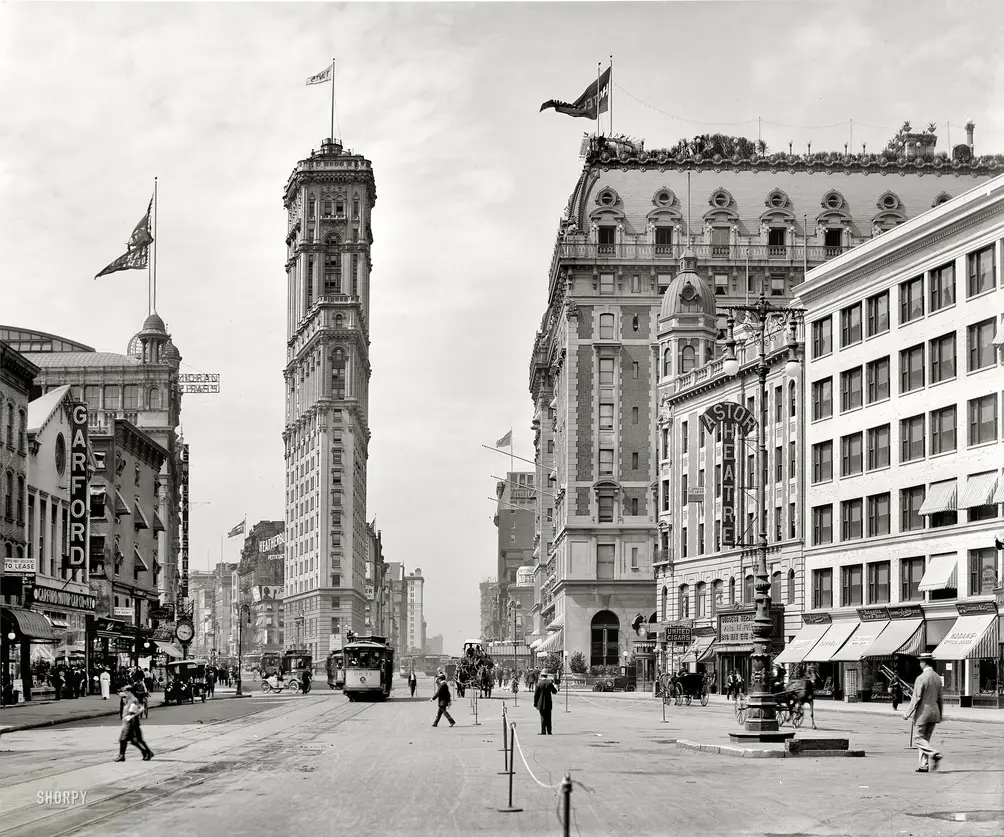 Manhattan circa 1908.
Manhattan circa 1908.
One Times Square is New York’s great architectural paradox, as it is one of the world’s most famous and exposed buildings that simultaneously stays all but anonymous. Upon its 1904 completion, the stepped wedge stood as the city’s third-tallest building and housed the new headquarters for the New York Times. Though the publisher moved out of the cramped quarters less than a decade later, its name has firmly stuck to the former Longacre Square. Its tradition of the “ball drop,” originally staged as a promotional stunt for the new building on December 31st, 1903, endures to this day as arguably the most famous New Year’s Eve celebration on Earth.
Despite its starring role at the Crossroads of the World, the building itself maintains a remarkably low profile. In the mid-1960s, its opulent granite and terra-cotta facade was stripped and “upgraded” with a shabby Modernist makeover, which has since been mostly obstructed by a tapestry of flashing advertisements. Aside from lower-floor retail, the building remains mostly unoccupied, becoming a massive billboard anchoring the country's most popular tourist destination.
Despite its starring role at the Crossroads of the World, the building itself maintains a remarkably low profile. In the mid-1960s, its opulent granite and terra-cotta facade was stripped and “upgraded” with a shabby Modernist makeover, which has since been mostly obstructed by a tapestry of flashing advertisements. Aside from lower-floor retail, the building remains mostly unoccupied, becoming a massive billboard anchoring the country's most popular tourist destination.
Work is underway on a top-to-bottom renovation that, in the words of Times Square Alliance president Tom Harris, “will bring New Year’s Eve to Times Square 365 days a year.” Six stories will be dedicated to a museum of the building's history, and the project will also feature an outdoor viewing deck overlooking Times Square and EVER, a hospitality space centered on weddings and related events (e.g., proposals, vow renewals). None of this comes at the expense of some of the world's most valuable advertising space; LED signs remained up during construction, and new LED billboards are on the way up.
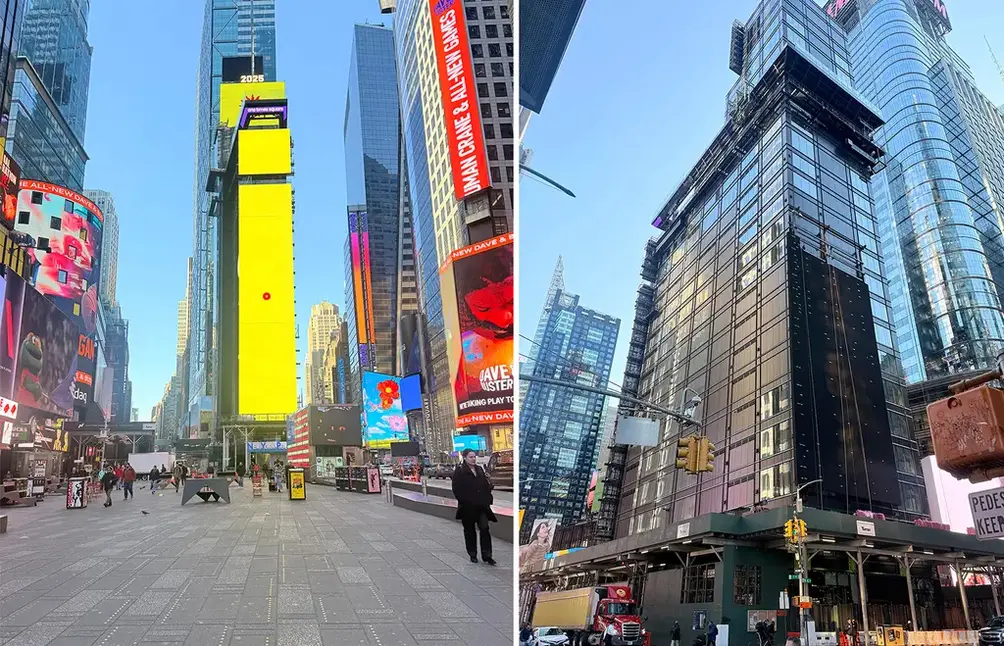 One Times Square, summer 2025 (CityRealty)
One Times Square, summer 2025 (CityRealty)
38 floors | 133 units | 2021 | Condominium
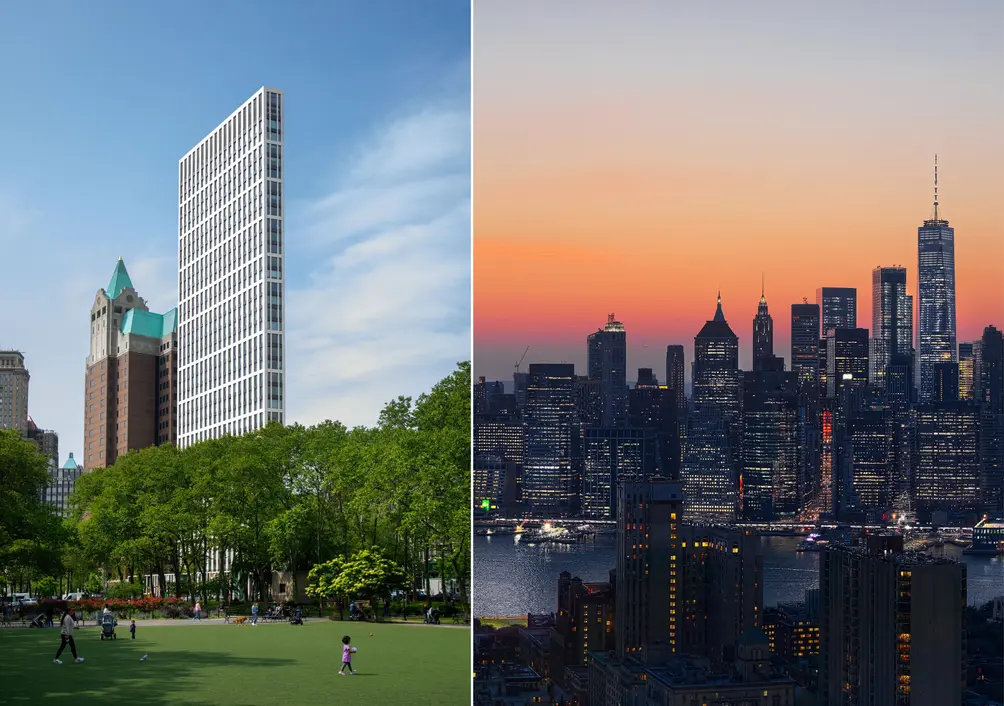 Photo of One Clinton and its lower Manhattan view courtesy of Marvel Architects
Photo of One Clinton and its lower Manhattan view courtesy of Marvel Architects
One Clinton stands at the junction of Clinton Street and Cadman Plaza West, where Downtown Brooklyn meets Brooklyn Heights. The crisp limestone façade soars 38 stories high; neatly-framed, floor-to-ceiling windows that offer observatory-like panoramas thanks to the building’s considerable height, prominent hilltop perch, and exposed location between Cadman Plaza Park and tree-lined brownstone blocks of Brooklyn Heights.
One of Brooklyn’s top-billed condo projects, One Clinton offers apartments with hardwood floors, marble countertops and islands in kitchens, and primary bathrooms with soaking tubs, walk-in showers, radiant floor heating and wood and marble finishes. Amenities include a 24-hour attended lobby, a bar-equipped Sky Lounge, a landscaped terrace with grilling stations, a children’s play space with indoor and outdoor areas, a sound-attenuated screening room, a music rehearsal area, a study, and a fitness center with a hot tub, sauna, and yoga studio. One Clinton also offers bike storage, garage parking, a laundry room, and private storage units available for purchase.
One of Brooklyn’s top-billed condo projects, One Clinton offers apartments with hardwood floors, marble countertops and islands in kitchens, and primary bathrooms with soaking tubs, walk-in showers, radiant floor heating and wood and marble finishes. Amenities include a 24-hour attended lobby, a bar-equipped Sky Lounge, a landscaped terrace with grilling stations, a children’s play space with indoor and outdoor areas, a sound-attenuated screening room, a music rehearsal area, a study, and a fitness center with a hot tub, sauna, and yoga studio. One Clinton also offers bike storage, garage parking, a laundry room, and private storage units available for purchase.
One Clinton, #19A
$3,999,000 (-5.9%)
Brooklyn Heights | Condominium | 3 Bedrooms, 2.5 Baths | 1,993 ft2
One Clinton, #19A (Serhant)
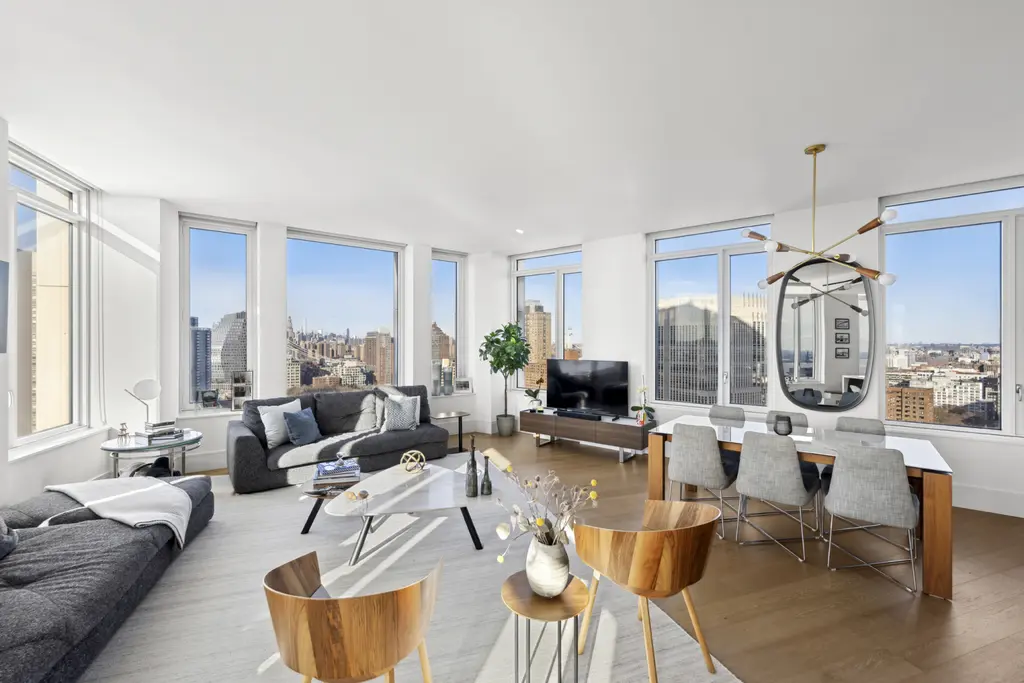
15 floors | 126 units | 1904 | Condominium
Cocoa Exchange, which boasts one of the city's finest-looking curves and tastiest-sounding names, marks the convergence of Pearl and Beaver Streets within Downtown’s angled street grid that dates back to the old Dutch days of New Amsterdam. The narrow, triangular building with a rounded, drum-like prow and an ornate, polychromatic pinnacle was built in 1904 and once served as the headquarters for the New York Cocoa Exchange.
More recently, the building gained exposure as the fictional Continental Hotel in the 2019 blockbuster John Wick 3. To potential residents, however, the landmark may be notable for its cozy common areas, fitness center, and a landscaped roof deck that allows for sunbathing whenever the sun passes between the surrounding skyscrapers.
More recently, the building gained exposure as the fictional Continental Hotel in the 2019 blockbuster John Wick 3. To potential residents, however, the landmark may be notable for its cozy common areas, fitness center, and a landscaped roof deck that allows for sunbathing whenever the sun passes between the surrounding skyscrapers.
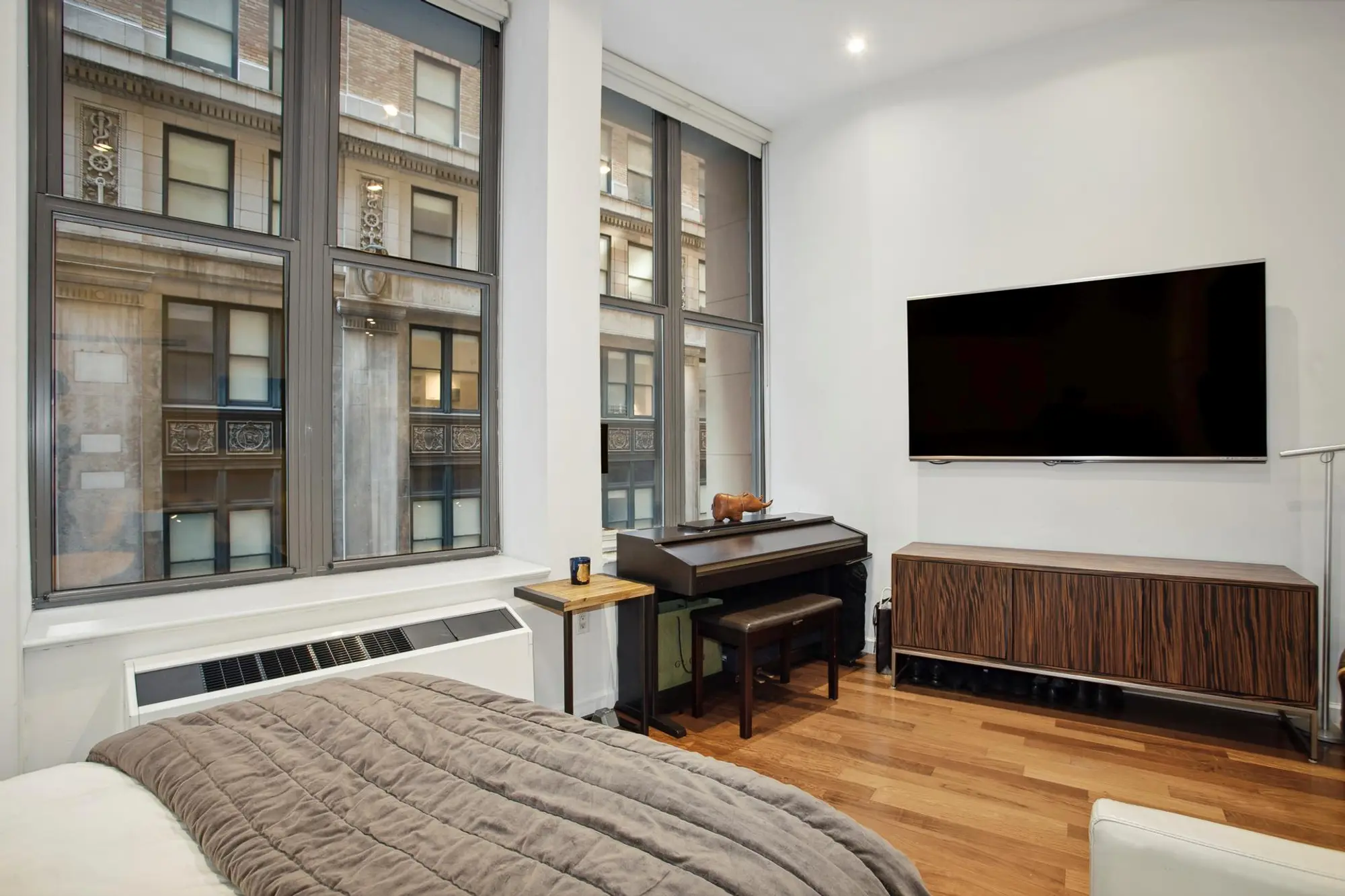
Cocoa Exchange, #207 (Douglas Elliman Real Estate)
24 floors | 84 units | Condominium | 2024
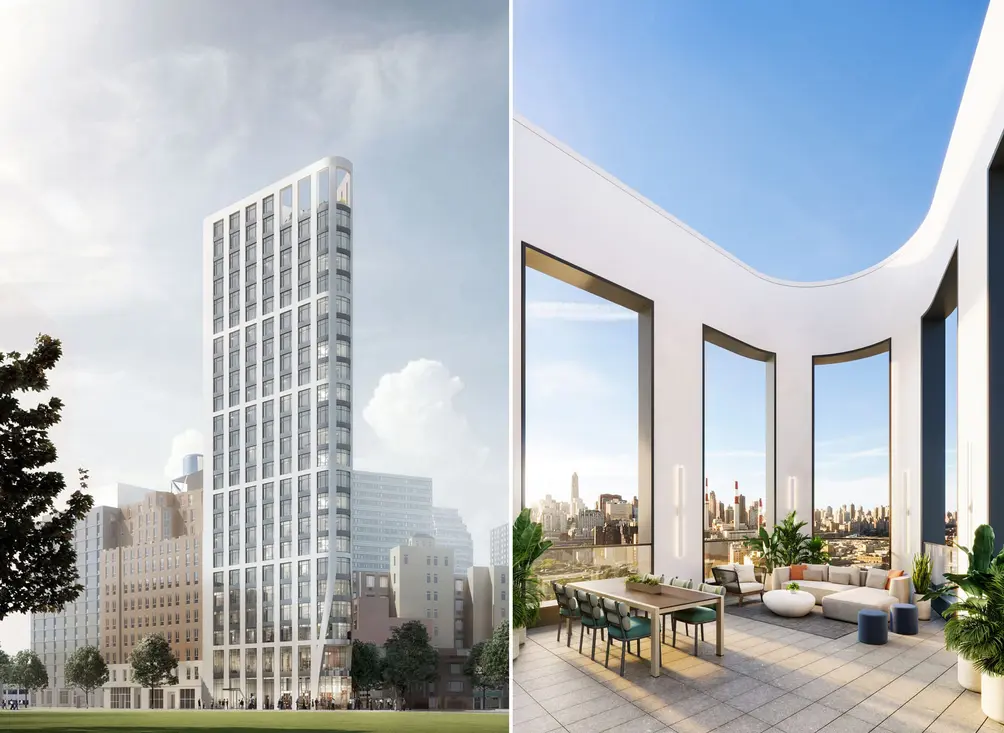 41-05 29th Street (SB Development Group)
41-05 29th Street (SB Development Group)
Jackson Avenue, Long Island City’s main thoroughfare, runs at an angle to the street grid and has already produced several wedge-shaped buildings along its course; none, however, match the height and style of NOVA. The building makes a bold addition to the Long Island City skyline, and open-concept layouts with crisp, clean interiors offer sophisticated homes that do not detract from beautiful views.
NOVA sets the tone upon arrival, when a feng shui-sensitive, Scandinavian-inspired lobby greets residents and visitors with a warm but elevated demeanor. The building's highest floor hosts a roof deck bestowing far-reaching views over the neighborhood and of the Manhattan skyline. Other amenities include a residents' library with an adjacent terrace, a fitness center, bike parking, a children's lounge, and a pet grooming station.
NOVA sets the tone upon arrival, when a feng shui-sensitive, Scandinavian-inspired lobby greets residents and visitors with a warm but elevated demeanor. The building's highest floor hosts a roof deck bestowing far-reaching views over the neighborhood and of the Manhattan skyline. Other amenities include a residents' library with an adjacent terrace, a fitness center, bike parking, a children's lounge, and a pet grooming station.
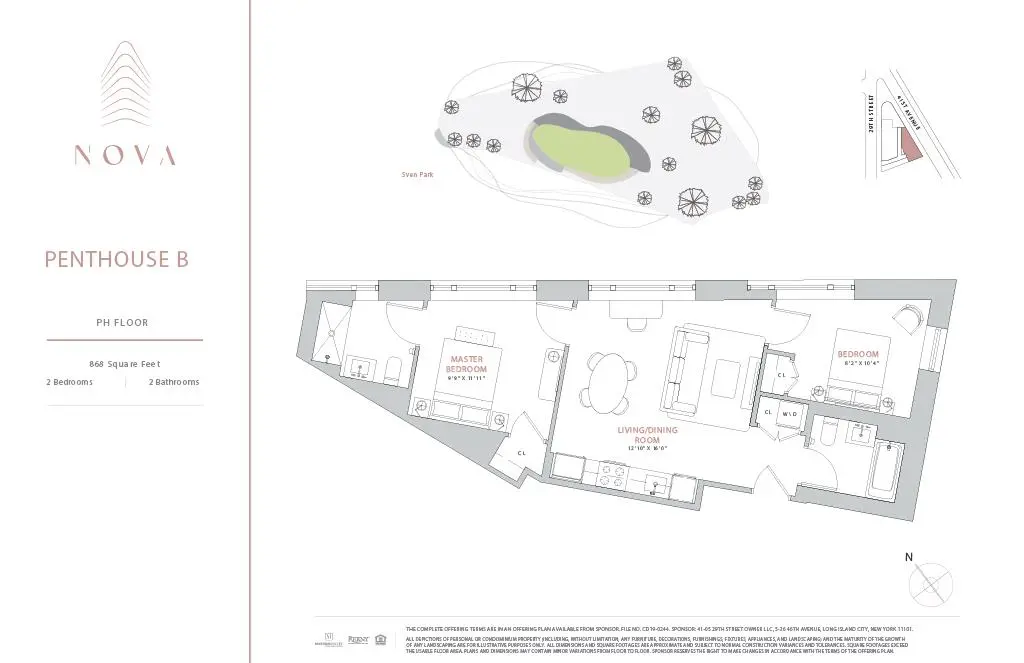
NOVA, #PHB (Modern Spaces)
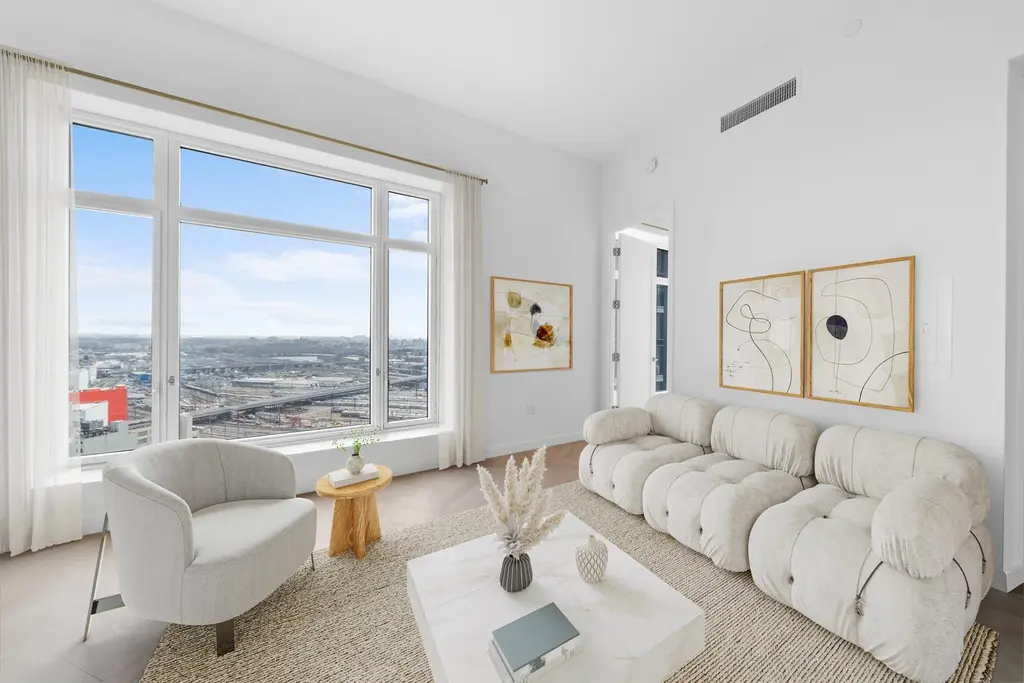
#6 - 63 Wall Street
37 floors | 476 units | 1928 | Rental
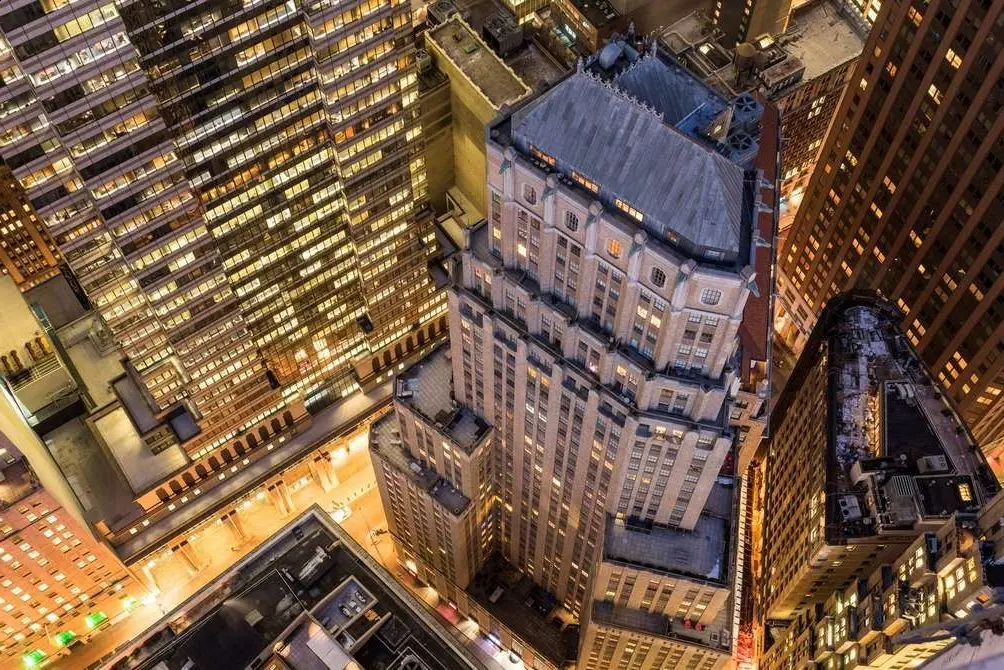 63 Wall Street
63 Wall Street
Across from Cocoa Exchange rises another, much larger “flatiron” that takes up a whole block. The Crest combines two adjacent pre-war office buildings, each angled on one side, creating a massive, 476-unit rental complex with a grand chandelier lounge, a marble-clad elevator lobby, a fitness center, a children’s playroom, and a roof deck that allows for grilling within view of Wall Street gargoyles.
The smaller of the two buildings stands at 67 Wall Street, at the where Beaver and Wall streets meet; its angular, 25-story prow, adorned with nautical reliefs at the base and pinnacle, rises across from the gently-curved Cocoa Exchange next door, making for one of the most dramatic intersections in Downtown. 63 Wall Street, the taller of the pair, greets the crossing of Wall and Hanover streets with a chamfered corner that rises in setbacks to a dramatic crown with a hipped roof, large octagonal windows, and projecting gargoyles.
The smaller of the two buildings stands at 67 Wall Street, at the where Beaver and Wall streets meet; its angular, 25-story prow, adorned with nautical reliefs at the base and pinnacle, rises across from the gently-curved Cocoa Exchange next door, making for one of the most dramatic intersections in Downtown. 63 Wall Street, the taller of the pair, greets the crossing of Wall and Hanover streets with a chamfered corner that rises in setbacks to a dramatic crown with a hipped roof, large octagonal windows, and projecting gargoyles.
8 floors | 40 units | 1891 | Rental

Cocoa Exchange may have a more delectable name, but when it comes to culinary delights, it’s 56 Beaver that’s got the goods, as it houses the Delmonico’s Steak House on the ground floor, with a grand entrance at the helm of its rounded prow. The eight-story landmark dates all the way back to 1891, making it a wedge-shaped building that predates even the famed Flatiron.
Architect James Brown Lord’s red-hued, brick-and-stone facade mixes Romanesque and Renaissance motifs, and the building remains one of Downtown’s finest-looking buildings even well more than a century after construction. Today, the former office building is a rental equipped with a fitness center and a roof deck.
Architect James Brown Lord’s red-hued, brick-and-stone facade mixes Romanesque and Renaissance motifs, and the building remains one of Downtown’s finest-looking buildings even well more than a century after construction. Today, the former office building is a rental equipped with a fitness center and a roof deck.
14 floors | 74 units | 1929 | Rental
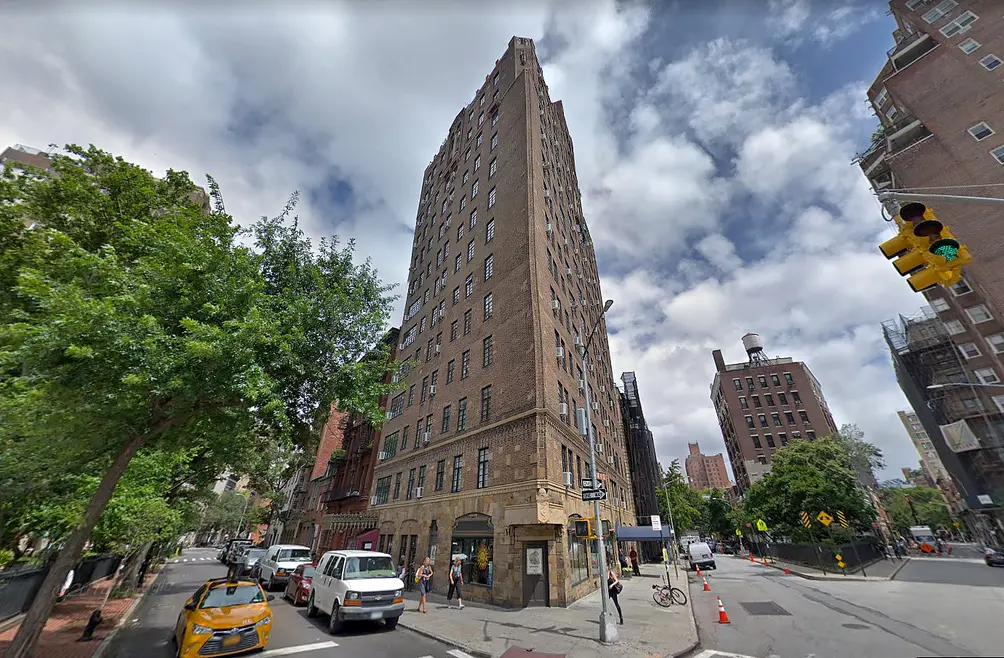 The Shenandoah (Google streetview)
The Shenandoah (Google streetview)
When the Flatiron Building rose in 1902, skyscrapers remained the exclusive domain of the office worker. By the late 1920’s, on the eve of the 1929 Multiple Dwelling Law that finally updated long-outdated tenement regulations for the skyscraper era, high-rise apartment buildings were already all the rage in the affluent parts of Manhattan, rising to around 15 stories, the maximum height achievable without resorting to loopholes such as the kitchenless “apartment hotel.”
The street gridiron of mid- and upper Manhattan produced canyons of fifteen-story-ish buildings, often whimsical at the top yet nearly always rectilinear in plan. By contrast, the quirky layout of Greenwich Village allowed for eye-catching building forms, such as the rake-angled-plan Shenandoah at 10 Sheridan Square. The building exterior is a romantic flight of medieval fantasy by Emery Roth, arguably the city’s premier architect of pre-war apartment buildings; the units feature spacious pre-war layouts and gridded loft-style windows.
The street gridiron of mid- and upper Manhattan produced canyons of fifteen-story-ish buildings, often whimsical at the top yet nearly always rectilinear in plan. By contrast, the quirky layout of Greenwich Village allowed for eye-catching building forms, such as the rake-angled-plan Shenandoah at 10 Sheridan Square. The building exterior is a romantic flight of medieval fantasy by Emery Roth, arguably the city’s premier architect of pre-war apartment buildings; the units feature spacious pre-war layouts and gridded loft-style windows.
#9 - 47 Plaza Street West
16 floors | 47 units | 1928 | Cooperative
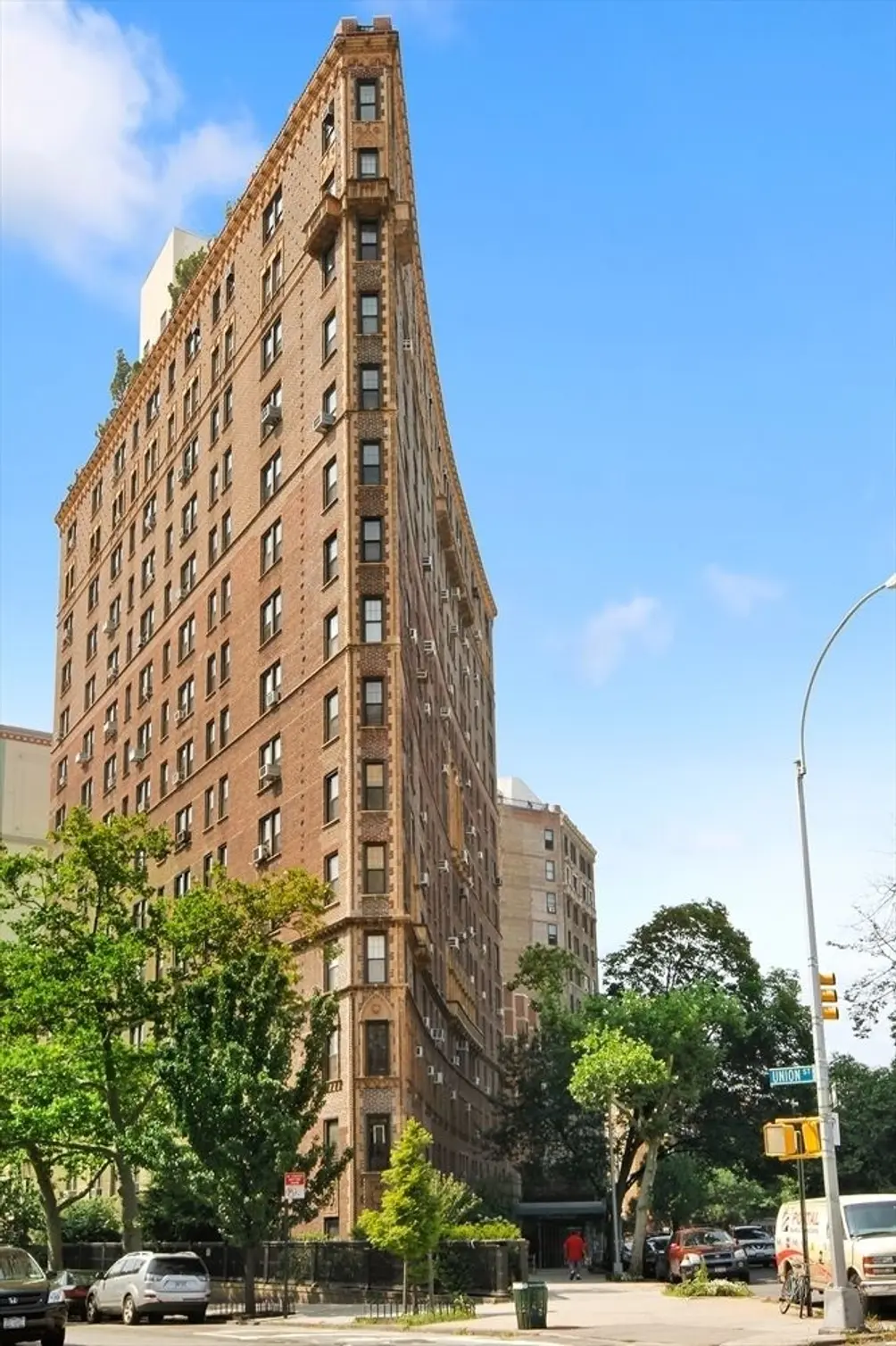 47 Plaza Street West (via Corcoran)
47 Plaza Street West (via Corcoran)
By the late 1920’s, high-rise apartment buildings rose alongside the Grand Army Plaza, a great oval centered on the Soldiers’ and Sailors’ Memorial Arch at the northern entrance to Prospect Park, and extended for several blocks in either direction. The Plaza’s oblong shape sliced rectangular blocks into concave shapes and gave rise to eye-catching buildings.
Of these, the most notable is the 16-story co-op 47 Park Plaza West, designed in a Gothic-Tudor style by Rosario Candela, the era’s only residential architect arguably more esteemed than Emery Roth. The concave sweep of the facade comes to a one-window-wide point at the tip, a shape that is arguably even more elegant than that of the Flatiron Building.
Of these, the most notable is the 16-story co-op 47 Park Plaza West, designed in a Gothic-Tudor style by Rosario Candela, the era’s only residential architect arguably more esteemed than Emery Roth. The concave sweep of the facade comes to a one-window-wide point at the tip, a shape that is arguably even more elegant than that of the Flatiron Building.
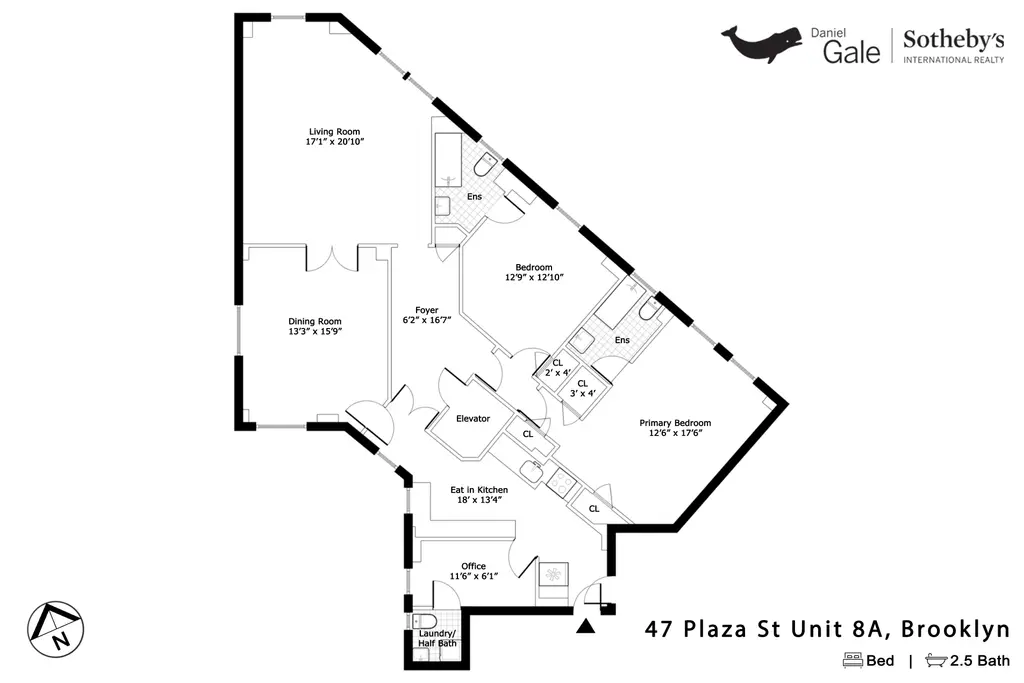
47 Plaza Street West, #8A (Daniel Gale of Brooklyn LLC)
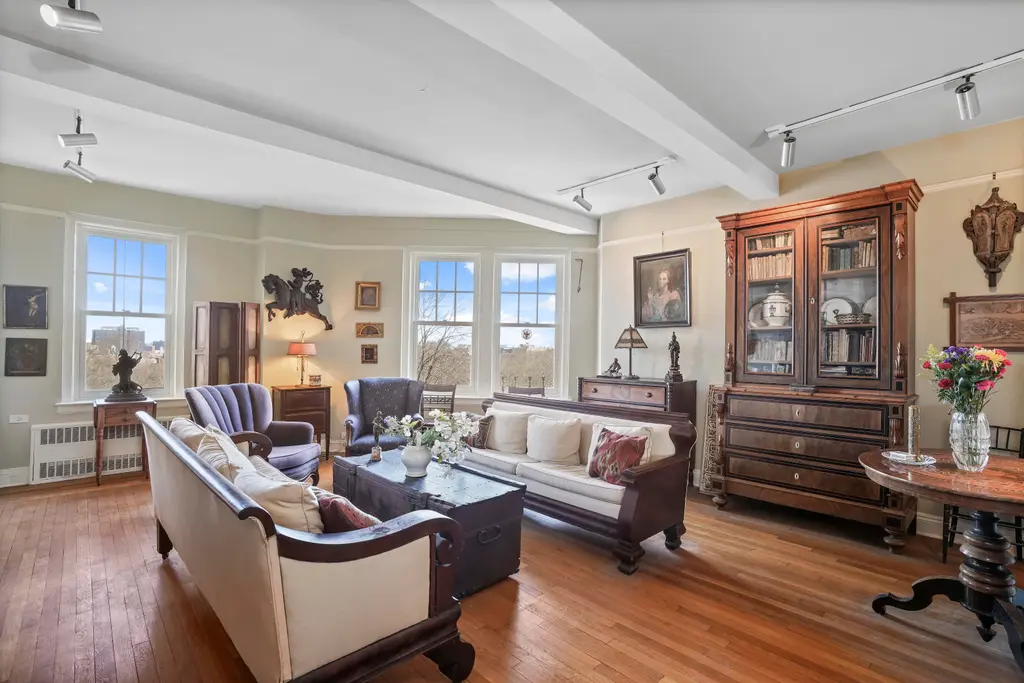
68 floors | 241 units | 1986 | Condominium
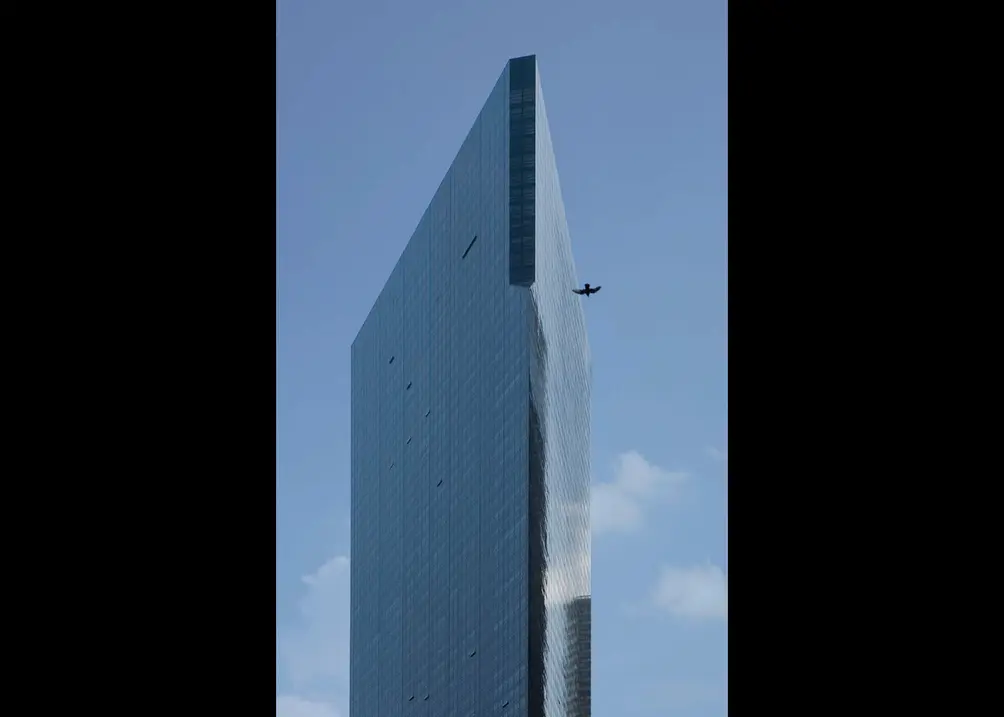 Metropolitan Tower (Credit: Macklowe Properties)
Metropolitan Tower (Credit: Macklowe Properties)
Most “flatirons” on this list respond to their triangular sites; however, Metropolitan Tower’s wedge shape was a deliberate gesture by SLCE Architects, even though the building stands on a rectangular lot. In 1985, the skyscraper stood as the tallest residential building in New York, with a sharp blade of black glass soaring 716 feet and offering spectacular panoramas of Central Park. In addition to creating a dramatic statement on the skyline, the form also allows park views from the building’s broad, east-facing side, which would not face the park if not for the building’s slanted form.
Metropolitan Tower set the precedent for today’s Billionaire’s Row not only with its 57th Street location, record-setting height, and Central Park vistas, but also with an fully-stacked amenity package that includes a full-time doorman, concierge, housekeeping service, a health club with an indoor pool and spa, a roof terrace, a residents-only dining club, a full service garage, and bicycle parking.
Metropolitan Tower set the precedent for today’s Billionaire’s Row not only with its 57th Street location, record-setting height, and Central Park vistas, but also with an fully-stacked amenity package that includes a full-time doorman, concierge, housekeeping service, a health club with an indoor pool and spa, a roof terrace, a residents-only dining club, a full service garage, and bicycle parking.
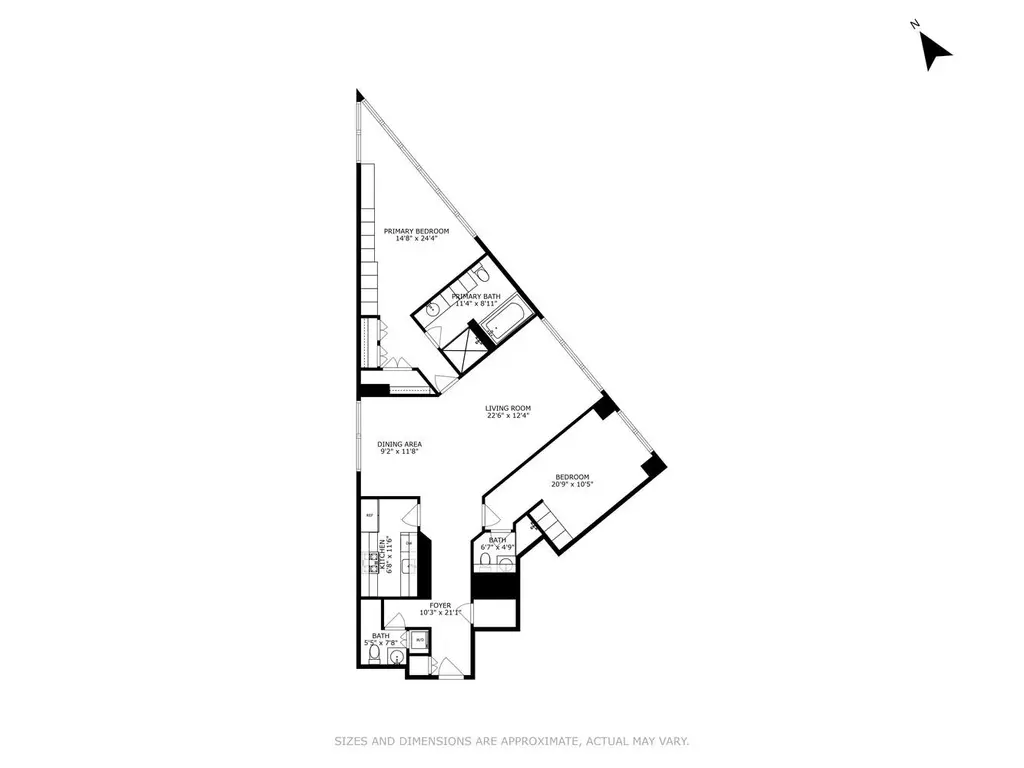
Metropolitan Tower, #58A (Corcoran Group)
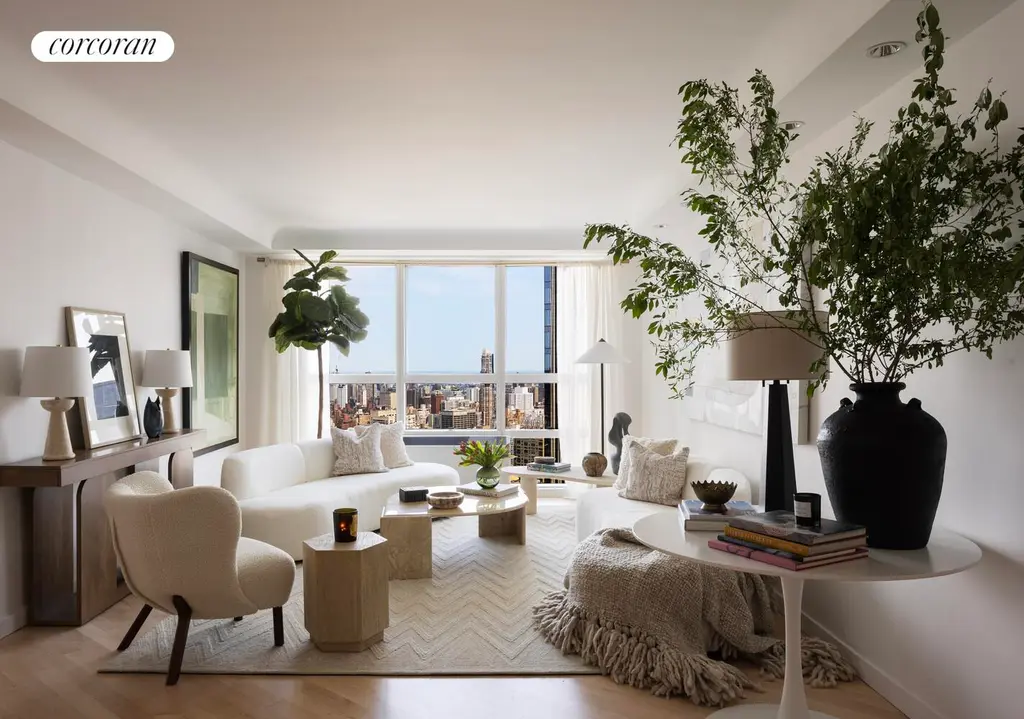
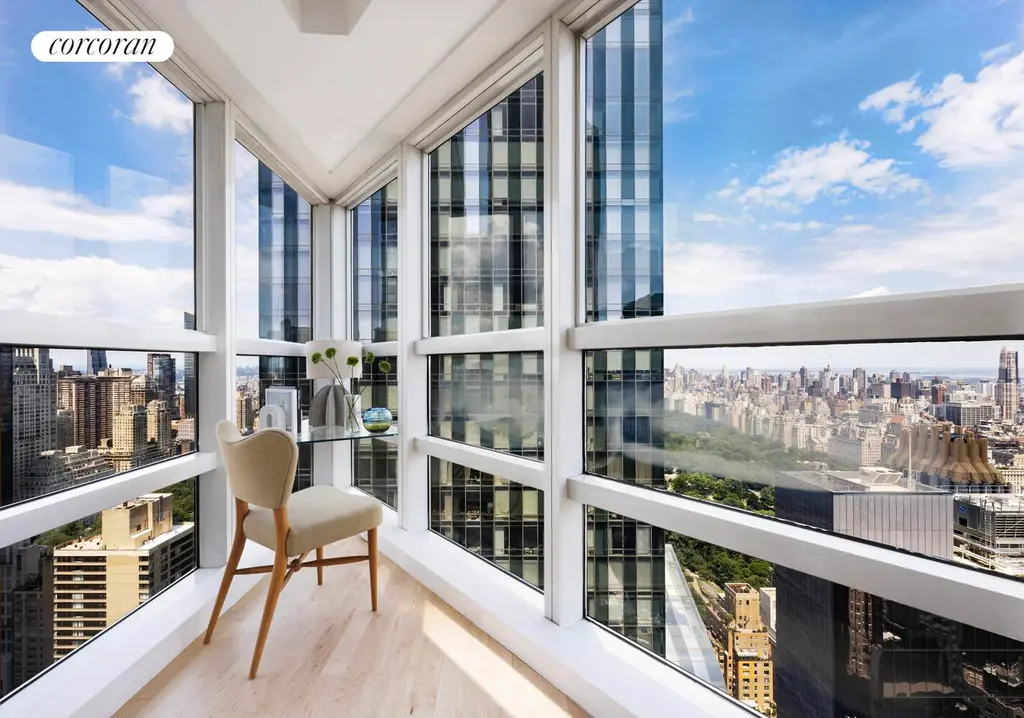
#11 - 10 Sullivan Street
16 floors | 19 units | 2015 | Condominium
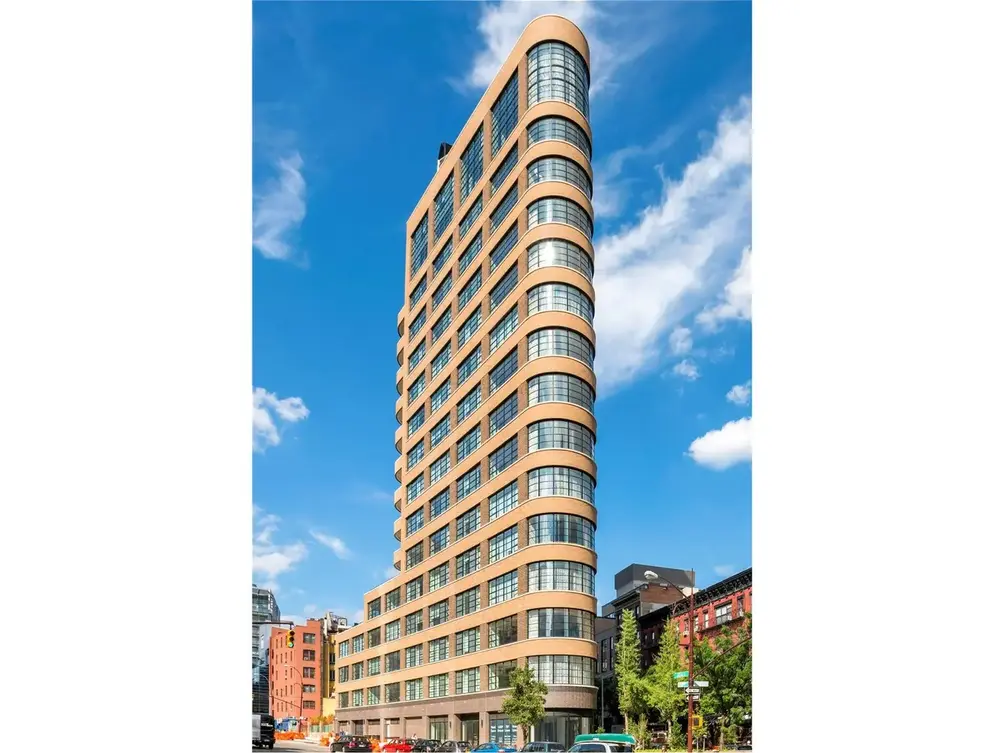 10 Sullivan Street exterior (Credit: Corcoran)
10 Sullivan Street exterior (Credit: Corcoran)
Art Moderne is the sleek, streamlined cousin of Art Deco, notable for its machine-line geometries, and there is hardly a better shape for such a building than one that evokes an ocean liner. The 19-story condo at 10 Sullivan Street was completed in 2015, yet its alternating bands of large gridded windows and warm red-orange brick, designed by architect Cary Tamarkin, channel the finest traditions of turn-of-the-century Streamline Moderne.
The rounded, glassed-in rooms in the building’s rounded corner are south-facing, sunlit solariums unlike any other in the city. The building comes with a fitness center, an indoor upper-level pool with panoramic views, a landscaped roof deck, and a garage.
The rounded, glassed-in rooms in the building’s rounded corner are south-facing, sunlit solariums unlike any other in the city. The building comes with a fitness center, an indoor upper-level pool with panoramic views, a landscaped roof deck, and a garage.
12 floors | 43 units | 1900 | Condominium
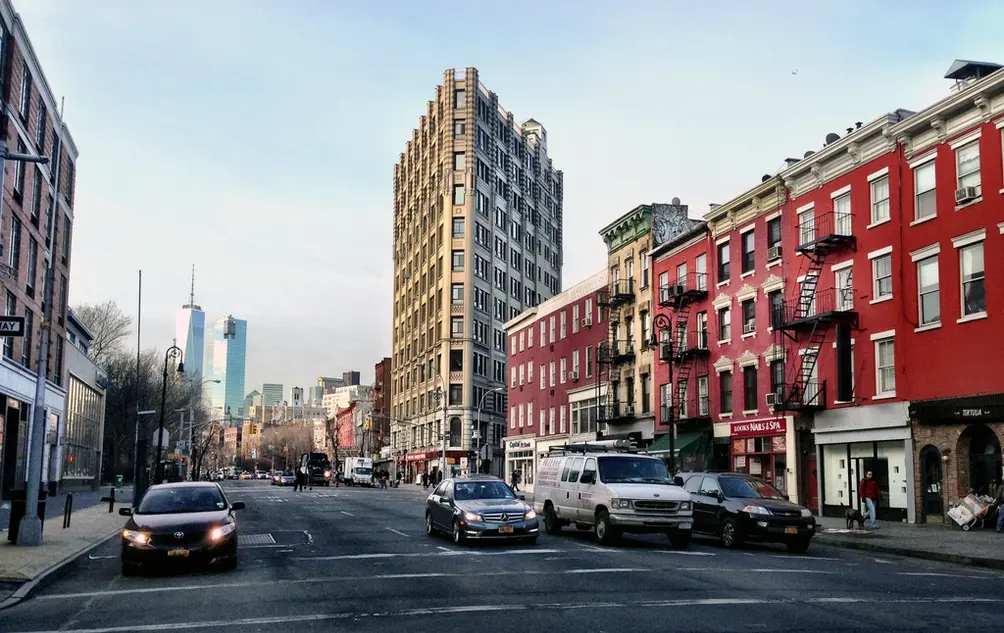 Varitype Building (Ondel/CityRealty)
Varitype Building (Ondel/CityRealty)
The 12-story Varitype Building at the junction of Sixth Avenue and Cornelia Street was built in 1907 as a commercial building and converted to residences in 1982. As is the case with other pre-war loft conversions, apartments benefit from high ceilings, large windows, sturdy industrial-grade construction, and a splendid facade adorned with geometric ornament and projections. The building towers prominently above Greenwich Village, and the roof deck opens onto dramatic skyline panoramas.
2 Cornelia Street, #PHA (Serhant)
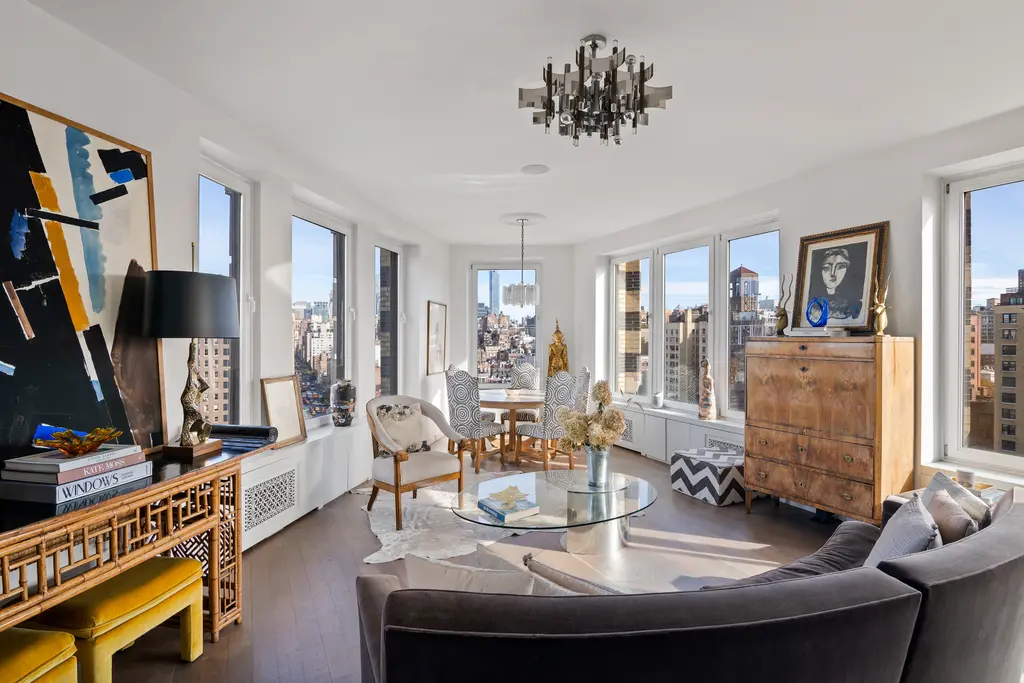
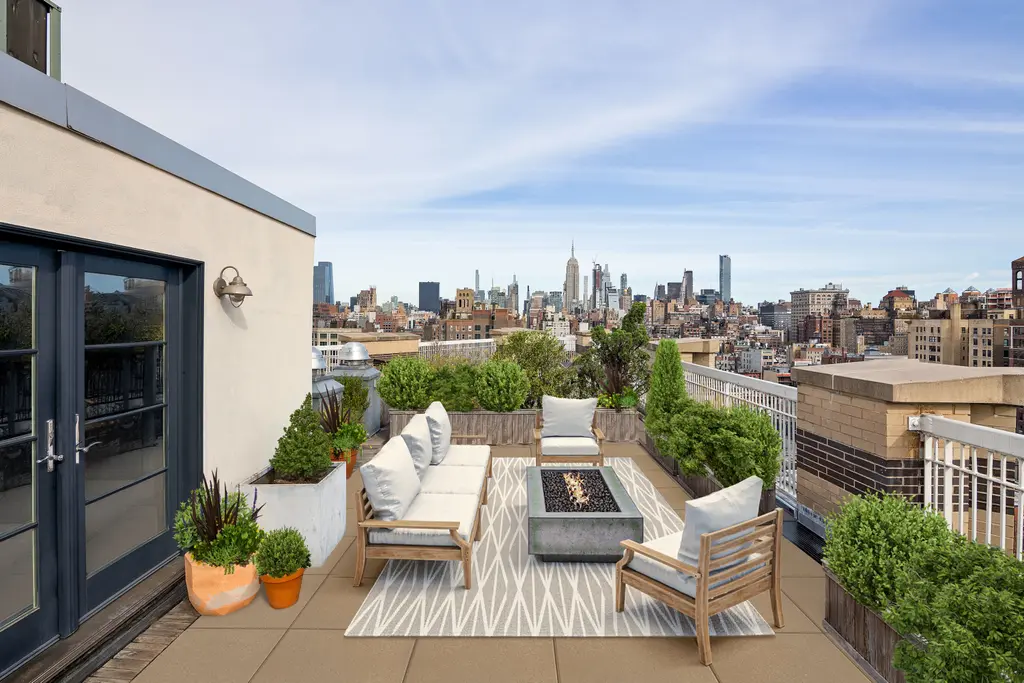
#13 - 230 Riverside Drive
19 floors | 268 units | 1931 | Condominium
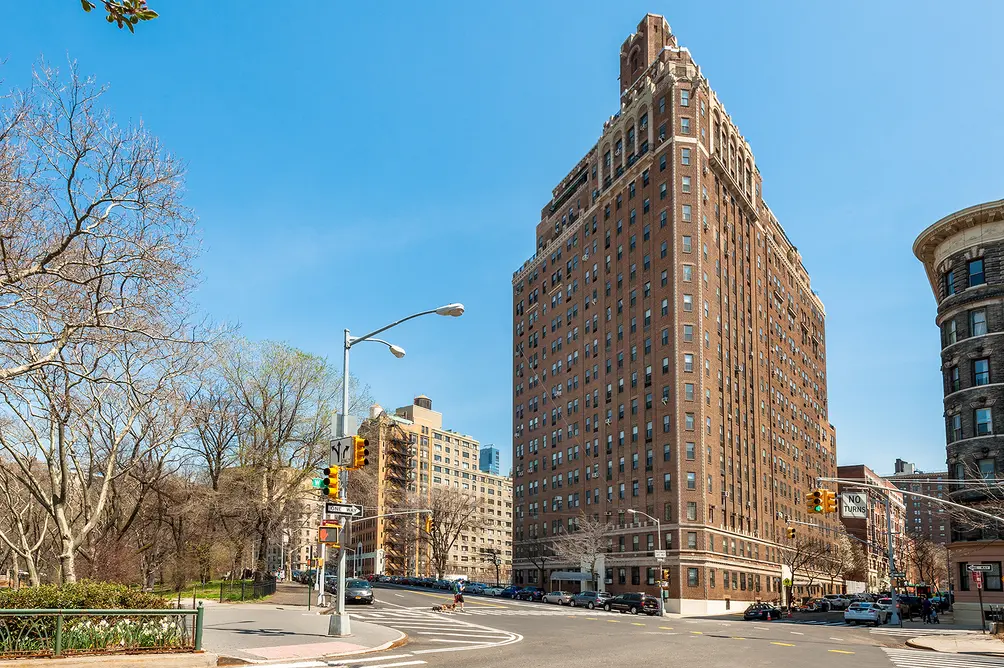 230 Riverside Drive (via CORE Real Estate)
230 Riverside Drive (via CORE Real Estate)
Riverside Drive meanders gently atop the Hudson River-facing bluff of Riverside Park, allowing for angled buildings where the curving promenade meets the rigid street grid. Of these, one of the finest is the 19-story, arch-topped edifice at 230 Riverside Drive, designed by Charles H. Lench and erected at the corner of West 95th Street in 1931. The 2005 condo conversion brought an amenity package that includes a fitness center, a children’s playroom, and more. The building’s lot walls face a large playground, meaning that the freestanding structure offers windows on every side.
230 Riverside Drive, #14AC
$2,995,000 (-7.8%)
Riverside Dr./West End Ave. | Condominium | 2 Bedrooms, 3 Baths | 1,600 ft2
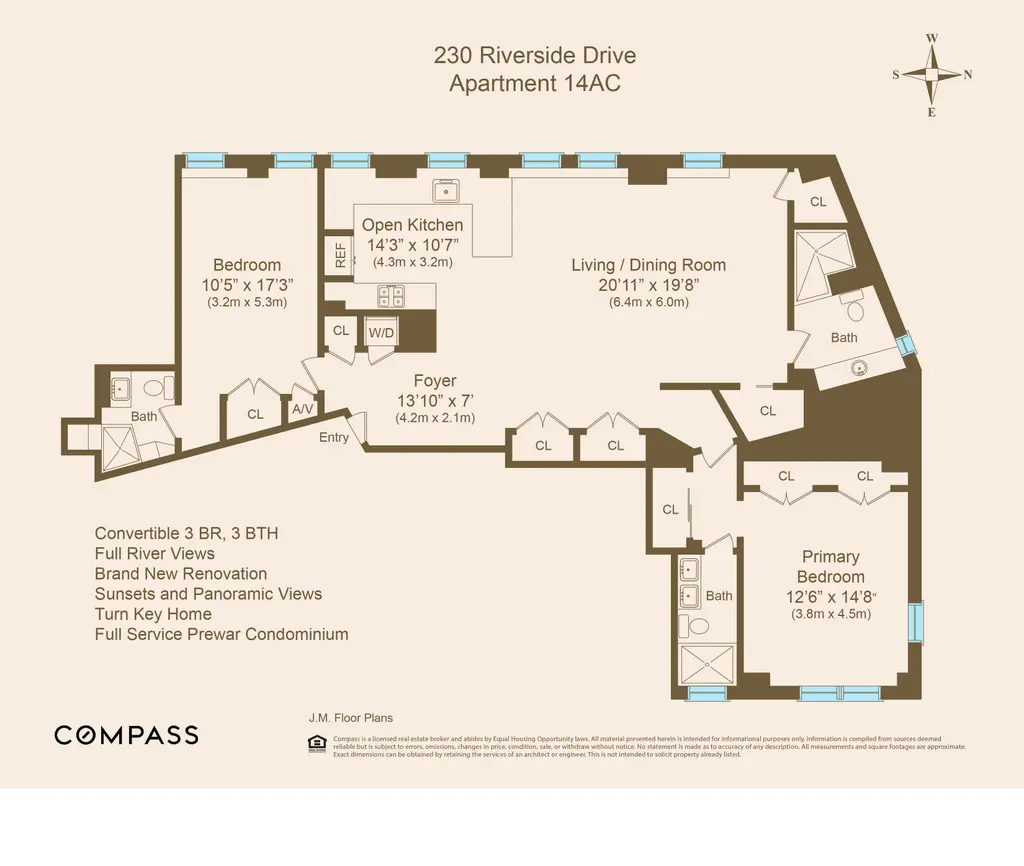
230 Riverside Drive, #14AC (Compass)
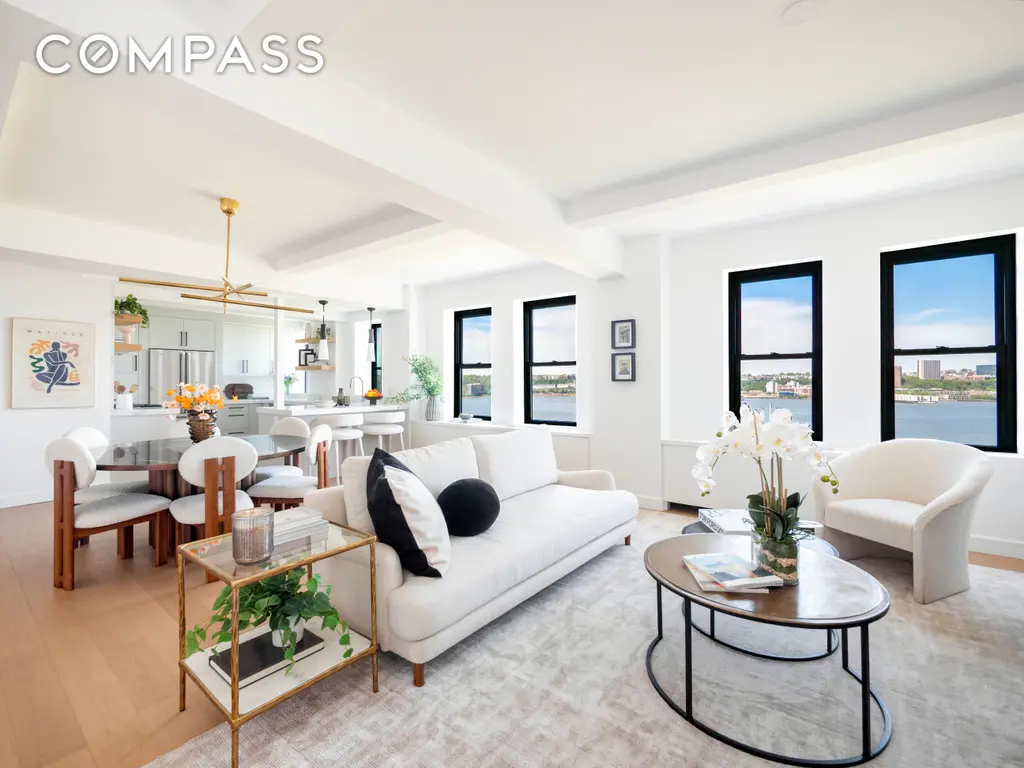
Would you like to tour any of these properties?
Just complete the info below.
Or call us at (212) 755-5544
#14 - Forte, 230 Ashland Place
28 floors | 108 units | 2007 | Condominium
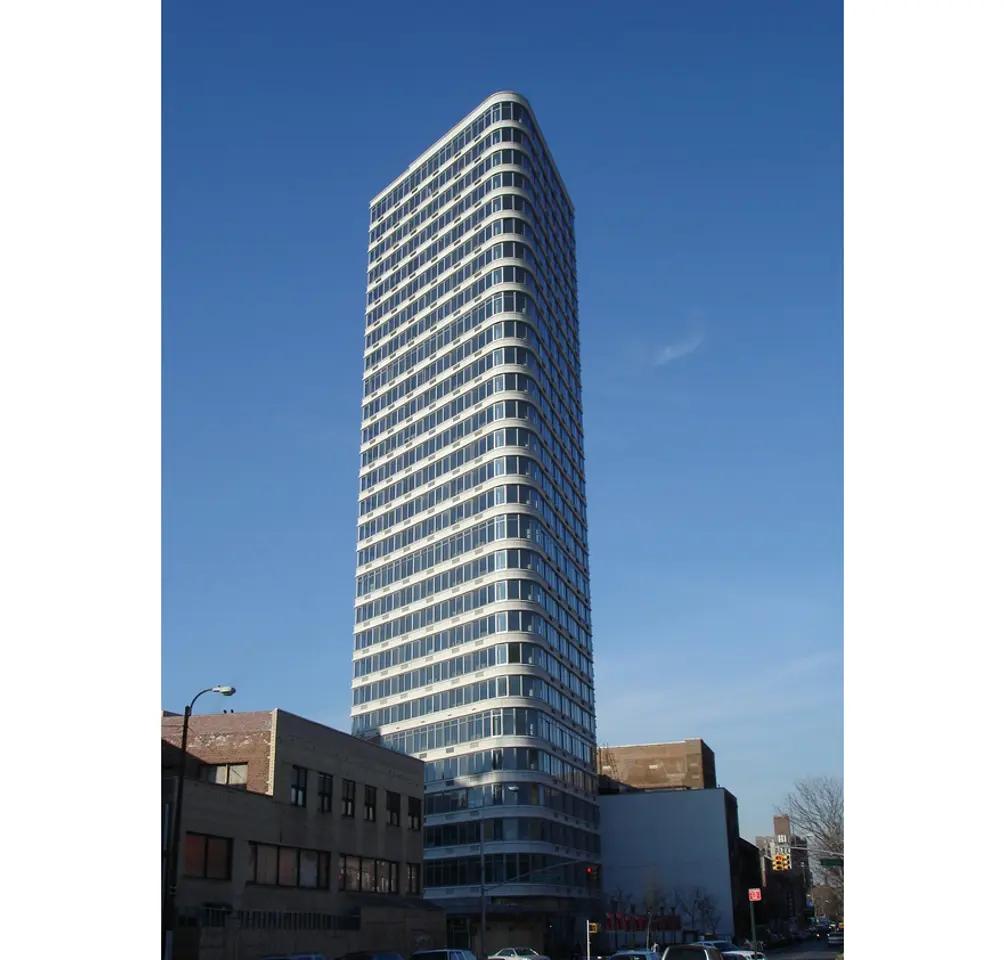 Forte at 230 Ashland Place
Forte at 230 Ashland Place
Downtown Brooklyn offers numerous acutely-angled sites, yet few utilize their footprint as gracefully as the Forte condominium wedged into the askew intersection of Fulton Street and Ashland Place. The tower, designed by FXFowle and completed in 2007, rises almost without setbacks to its 28-story pinnacle and greets the street plaza with a rounded corner that softens the pointed form and creates observatory-like spaces within the apartments. Alternating horizontal bands of tall windows and striped mullions make for a Streamlined Moderne look that makes for a unique presence on the skyline. The condominium offers a full-time doorman, a fitness center, and a roof deck.
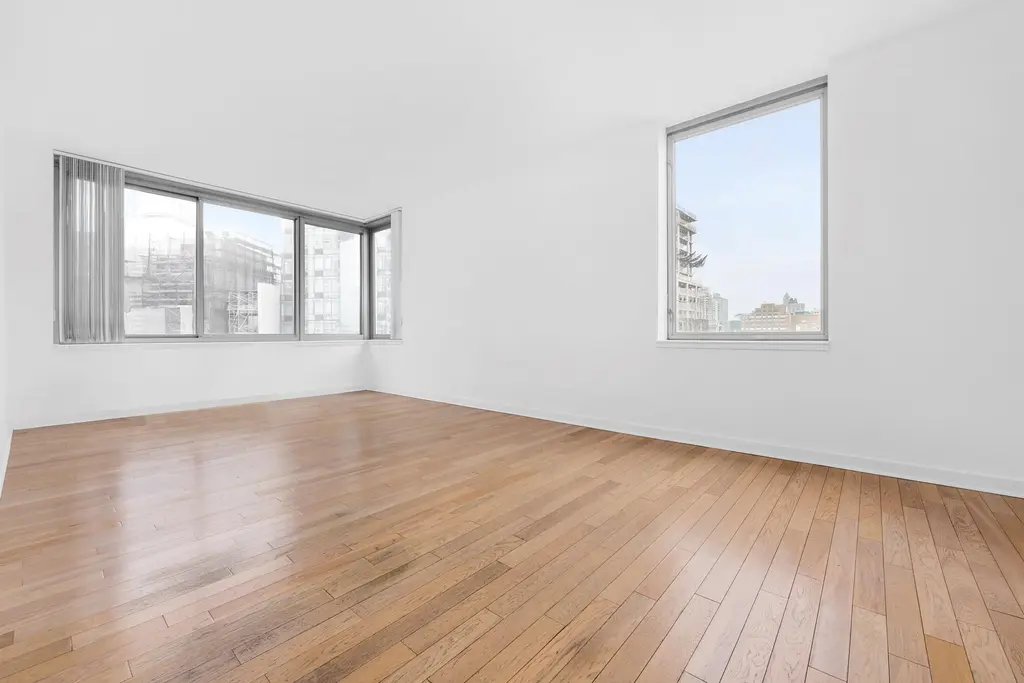
Forte, #11D (Douglas Elliman Real Estate)
#15 - One Park Row
23 floors | 58 units | 2025 | Condominium
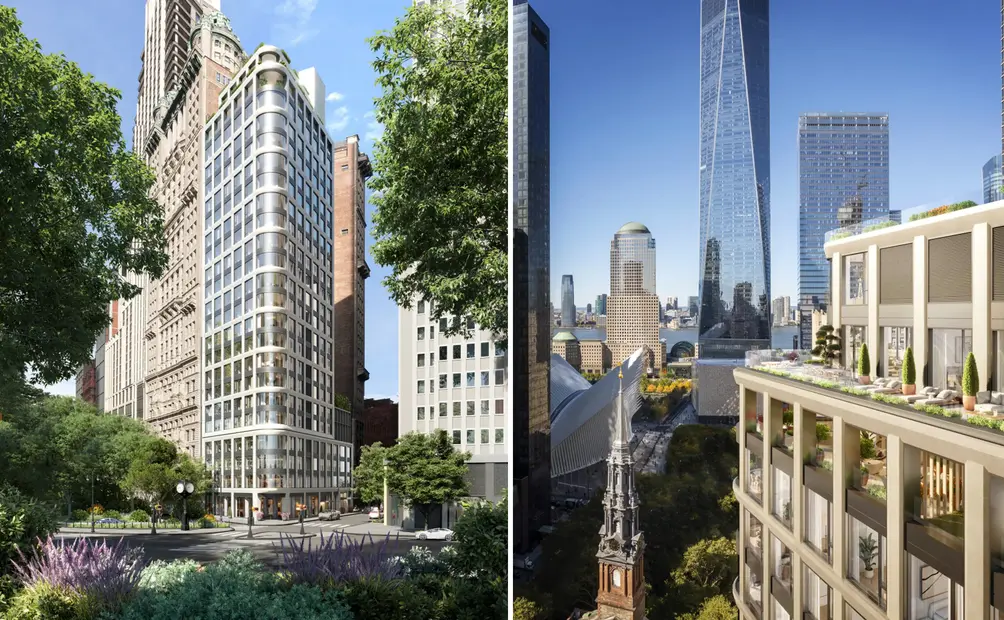 One Park Row (Serhant)
One Park Row (Serhant)
Those curious about how the shape of the Flatiron Building will influence its interiors may be able to see a preview at One Park Row, a prow-shaped building that rose on the former site of the J&R Music Record Store in the Financial District. The condos start on top of retail space, and select units are set to enjoy curved windows and uniquely shaped Great Rooms with City Hall Park frontage.
All units will feature interiors by Paris Forino, wide plank oak floors, high-end kitchens, and in-unit Bosch washers and dryers. Amenities include a fully equipped fitness center, a lounge with a catering kitchen, an outdoor dog run, and a rooftop terrace with outdoor kitchen and views of One World Trade Center. The first move-ins are anticipated for later this year.
All units will feature interiors by Paris Forino, wide plank oak floors, high-end kitchens, and in-unit Bosch washers and dryers. Amenities include a fully equipped fitness center, a lounge with a catering kitchen, an outdoor dog run, and a rooftop terrace with outdoor kitchen and views of One World Trade Center. The first move-ins are anticipated for later this year.
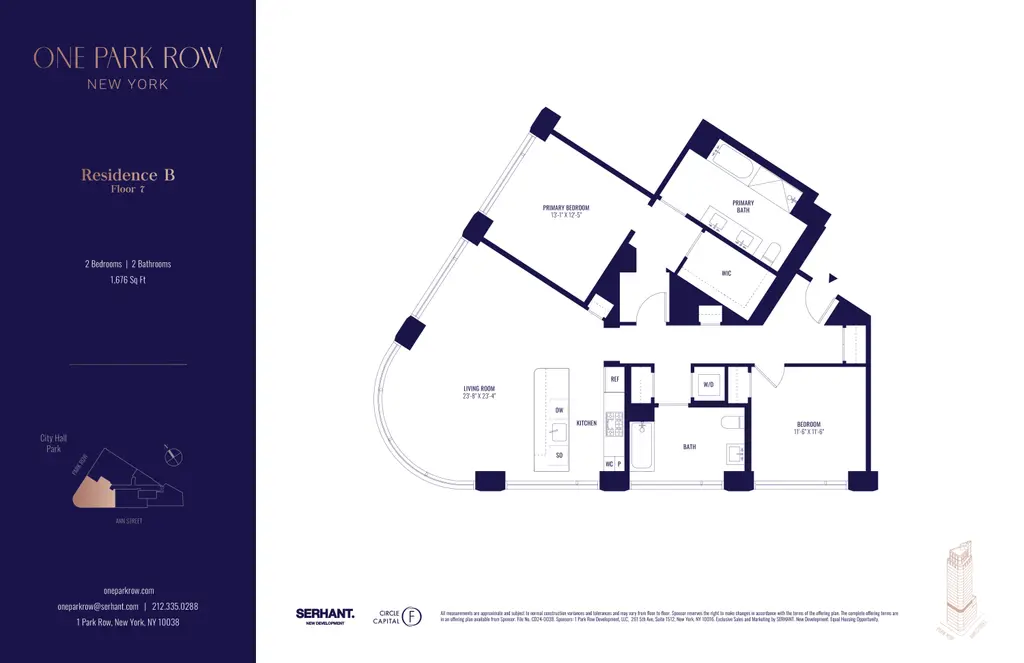
1 Park Row, #7B (Serhant)
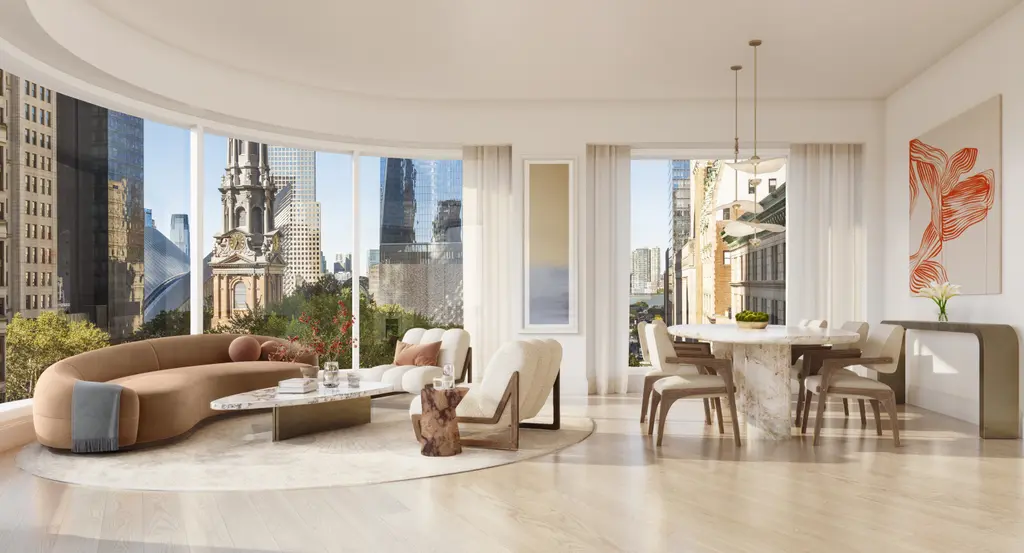
Honorable Mentions
8 floors | 10 units | Estimated for 2019 | Condominium
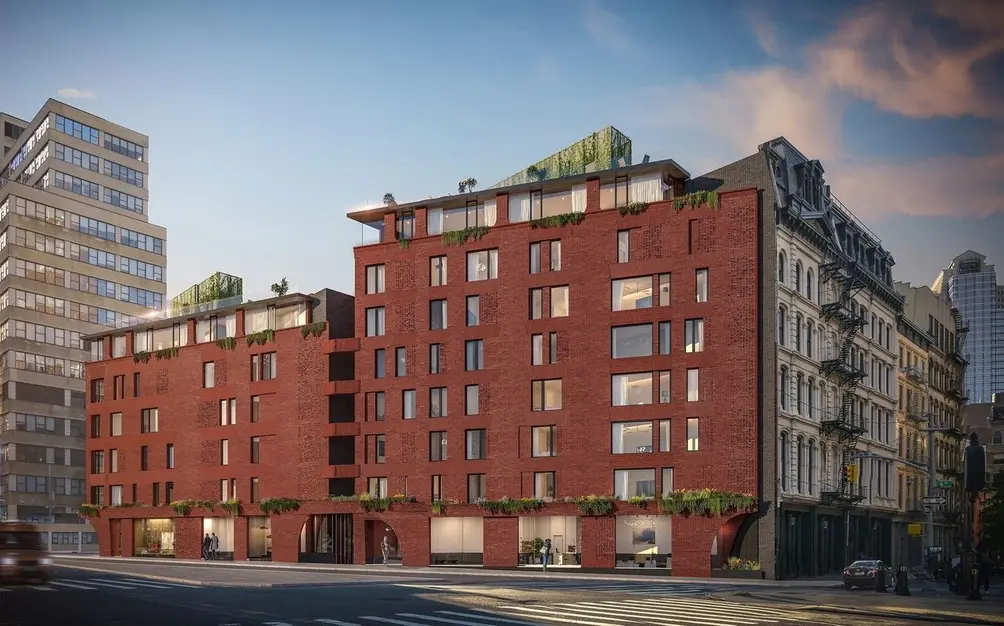 100 Franklin Street (Compass)
100 Franklin Street (Compass)
Down the street from the forthcoming 14 White Street (see below), 100 Franklin Street stands out as much for its distinctive shape as for its striking red brick facade. The wedge-shaped building allows for unique floor plans for the apartments inside, all of which feature direct elevator access, high ceilings, premium kitchen appliances, and luxurious primary suites. Residents enjoy an in-building fitness center, a roof deck, and close proximity to the Roxy Hotel and Cinema, popular Tribeca restaurants, and many transportation options.
100 Franklin Street, #PHS (Compass)
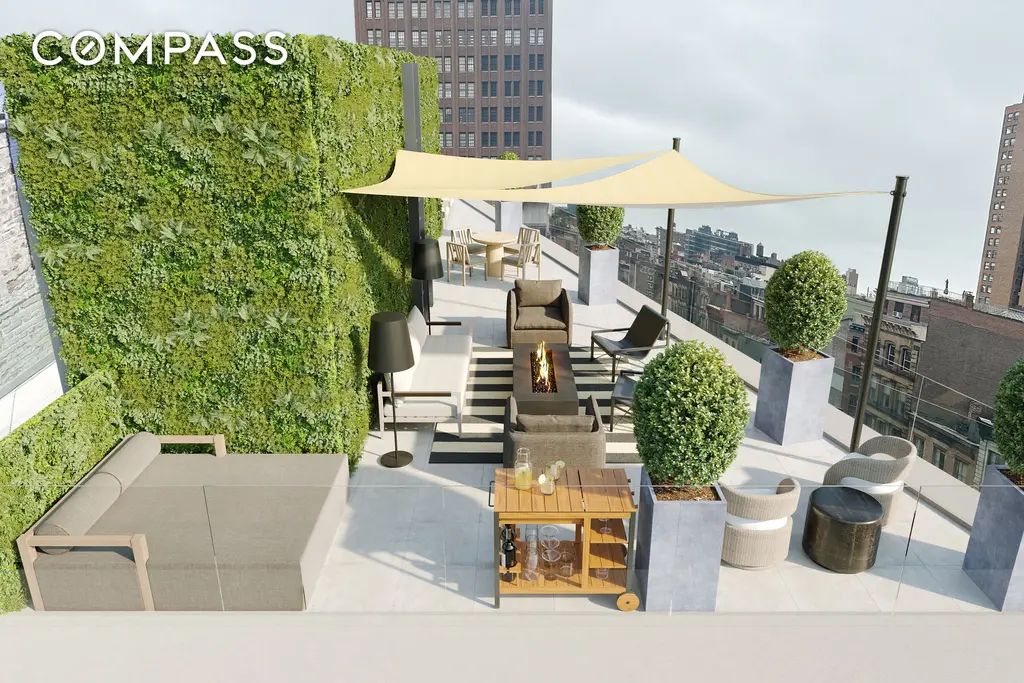
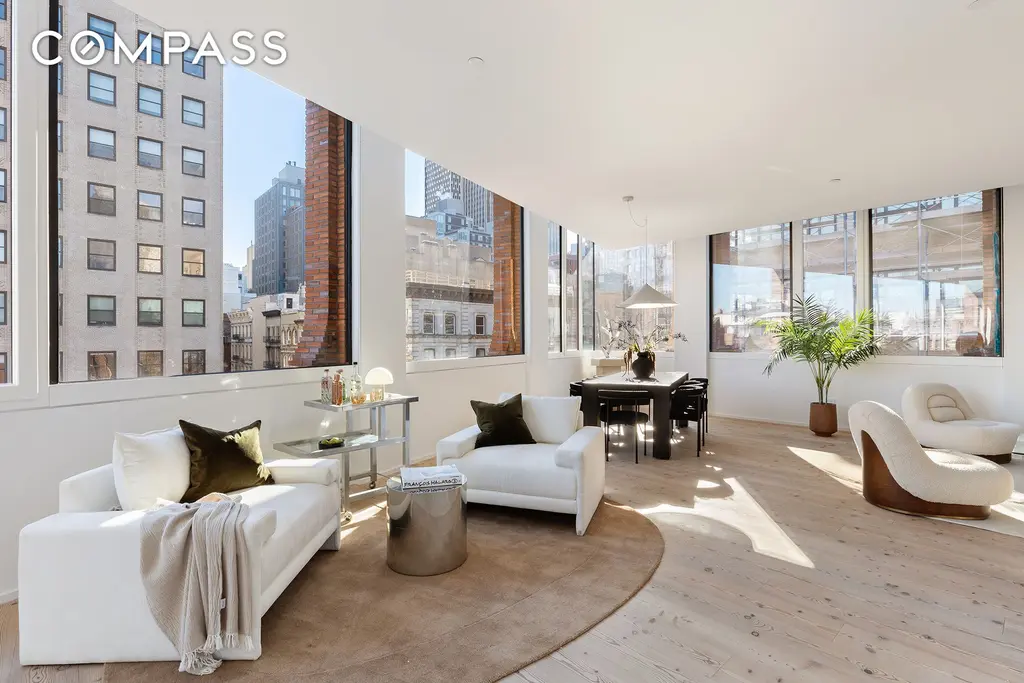
15 floors | 167 units | 1926 | Cooperative
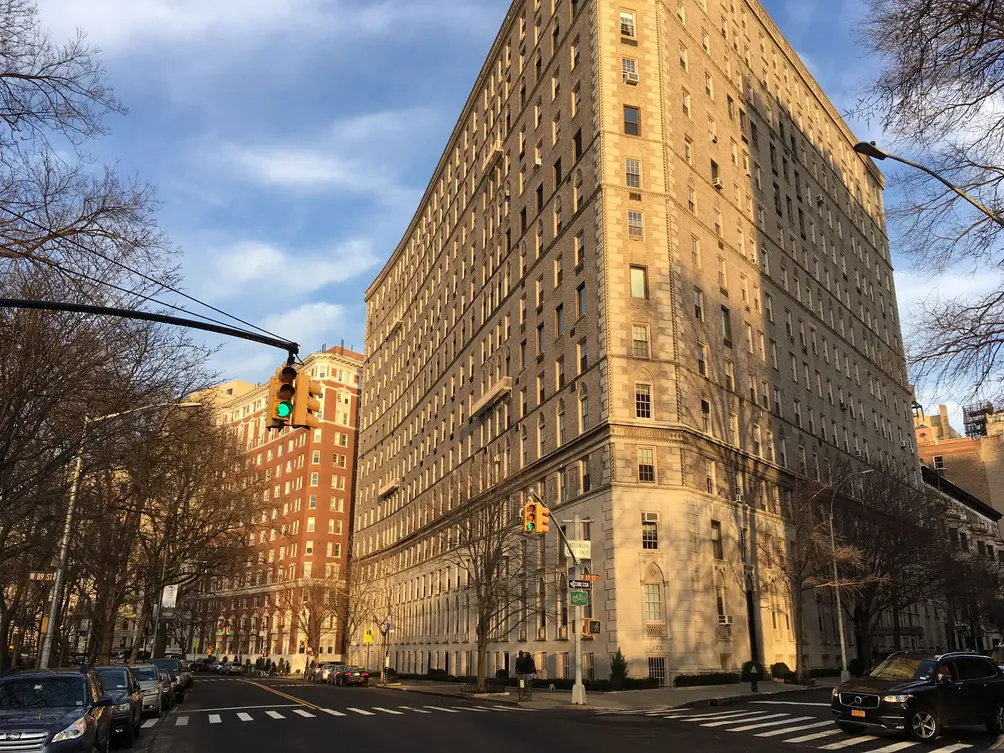 173 Riverside Drive (Corcoran)
173 Riverside Drive (Corcoran)
173 Riverside Drive is a grand, Gothic-styled pre-war co-op that spans the block between West 89th and 90th streets, with a bright, stone-clad lobby illuminated by pointed, stained-glass windows that create the atmosphere of a medieval cloister. The angle-cornered building comes with a fitness center, a children’s playroom, and a garden.
16 floors | 169 units | 1929 | Cooperative
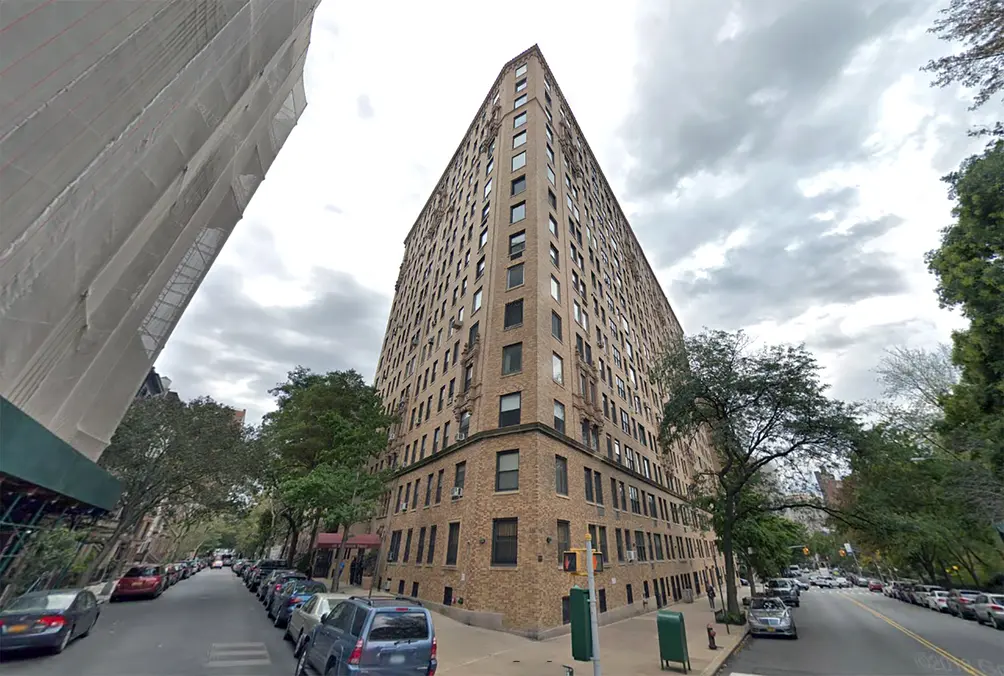 110 Riverside Drive (Google street view)
110 Riverside Drive (Google street view)
118 Riverside Drive is a 16-story co-op built in 1929 in a delightful Romanesque style with warm orange brick, twisting colonnettes, and an arched, lanterned entrance. The building, situated between West 83rd and 84th streets, is equipped with a fitness center and a bike room.
16 floors | 133 units | 1929 | Rental
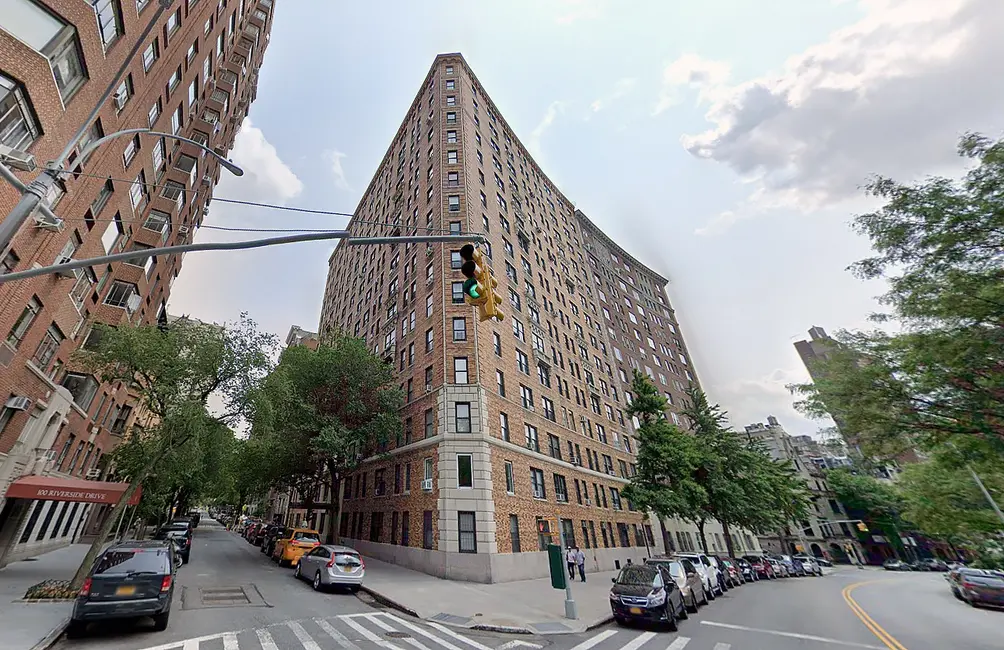 98 Riverside Drive (Google streetview)
98 Riverside Drive (Google streetview)
22 floors | 64 units | 2005 | Condominium
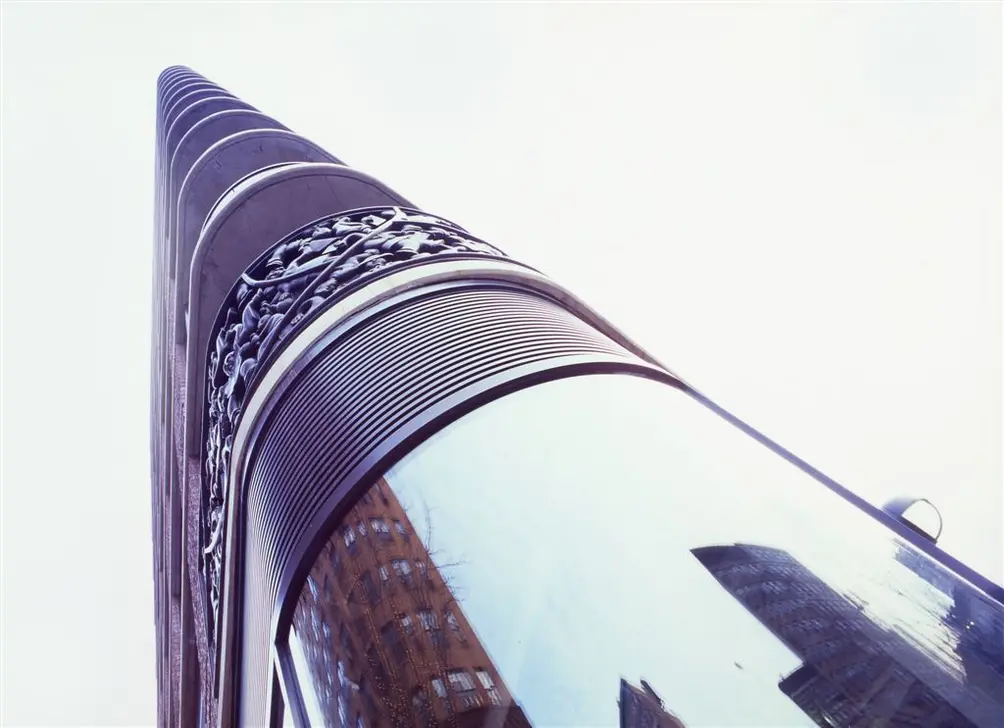 2770 Broadway (GKV Architects)
2770 Broadway (GKV Architects)
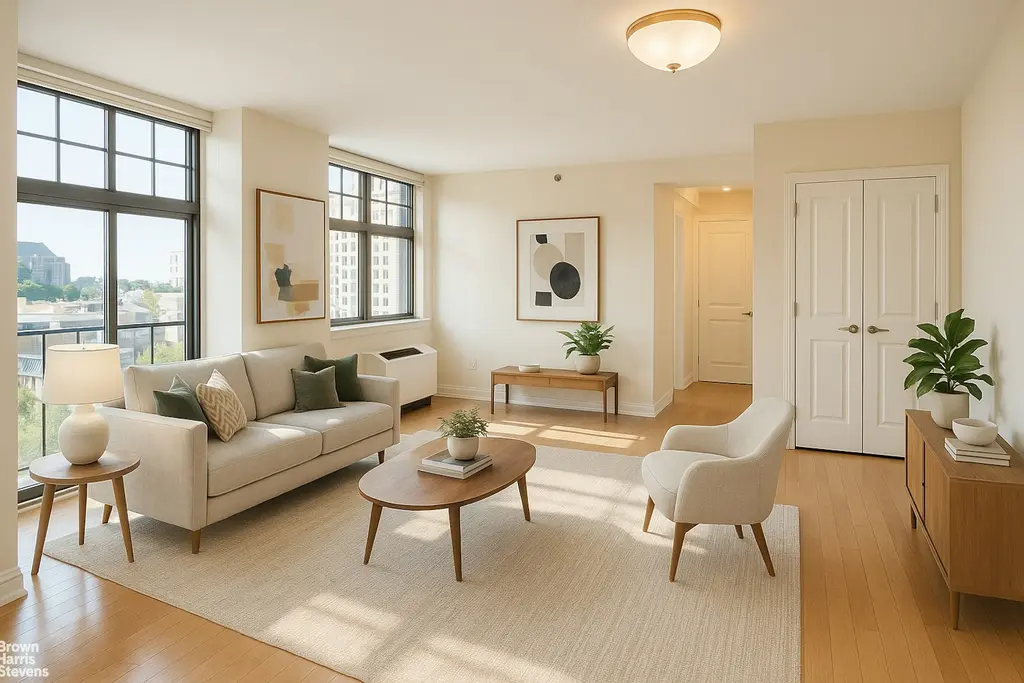
Straus Park, #12D (Brown Harris Stevens Residential Sales LLC)
9 floors | 86 units | 2017 | Condominium
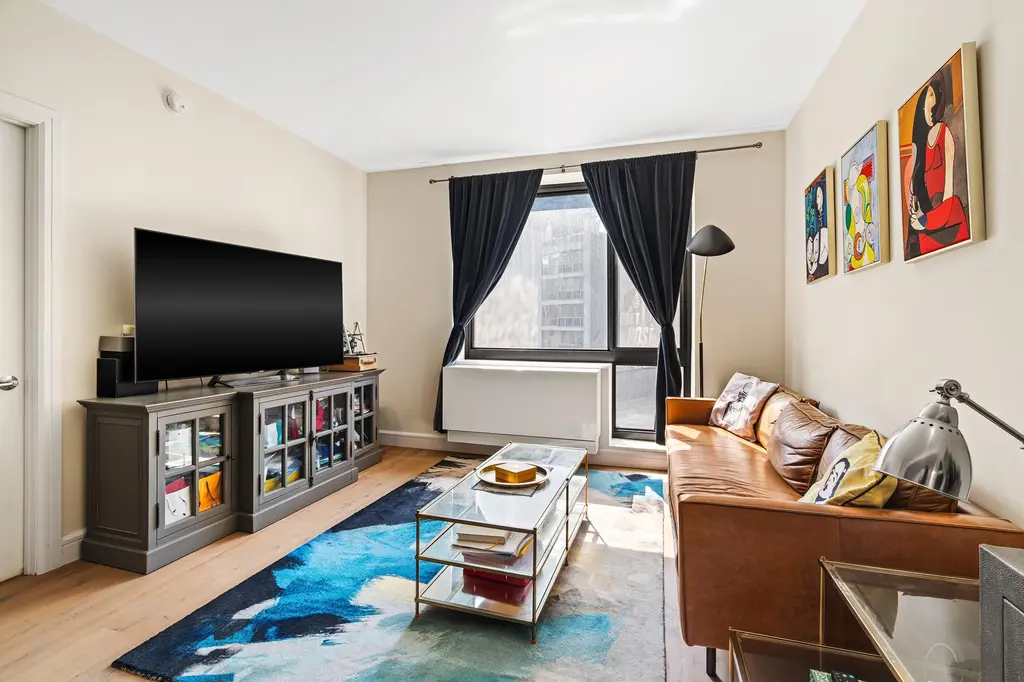
Dutch LIC, #511 (Modern Spaces)
11 floors | 49 units | 2021 | Rental
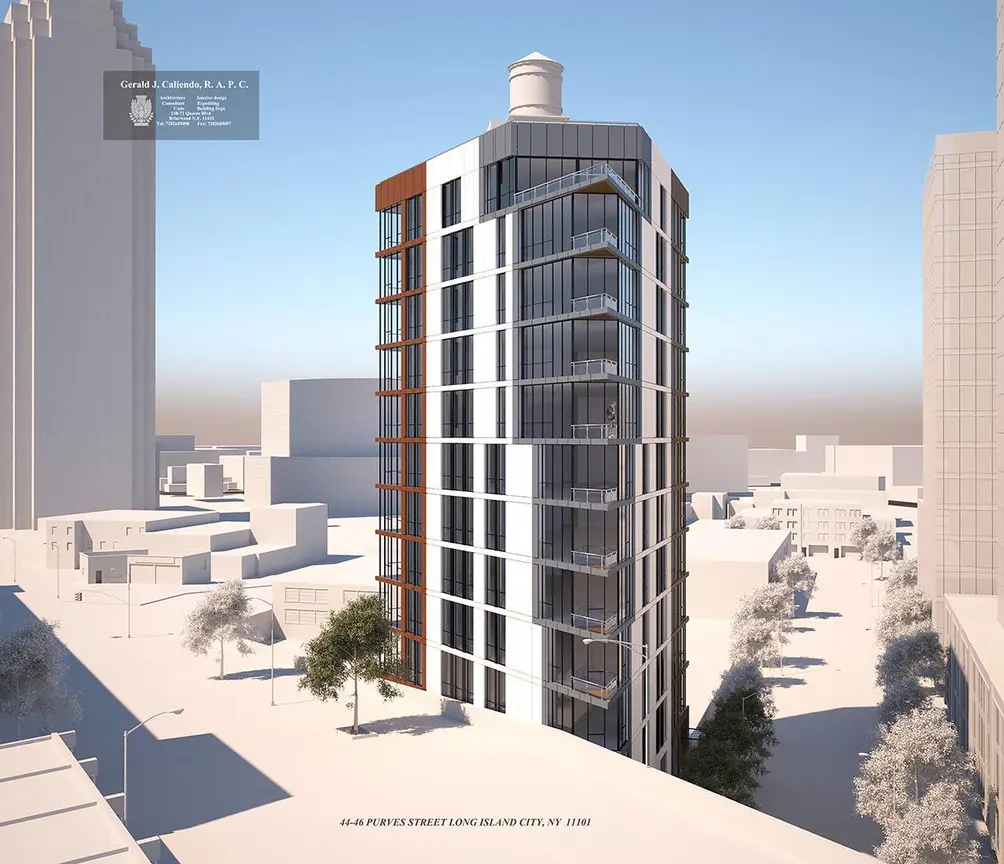 Credit: Gerald J. Caliendo Architects
Credit: Gerald J. Caliendo Architects
38 floors | 256 units | 2025 | Rental
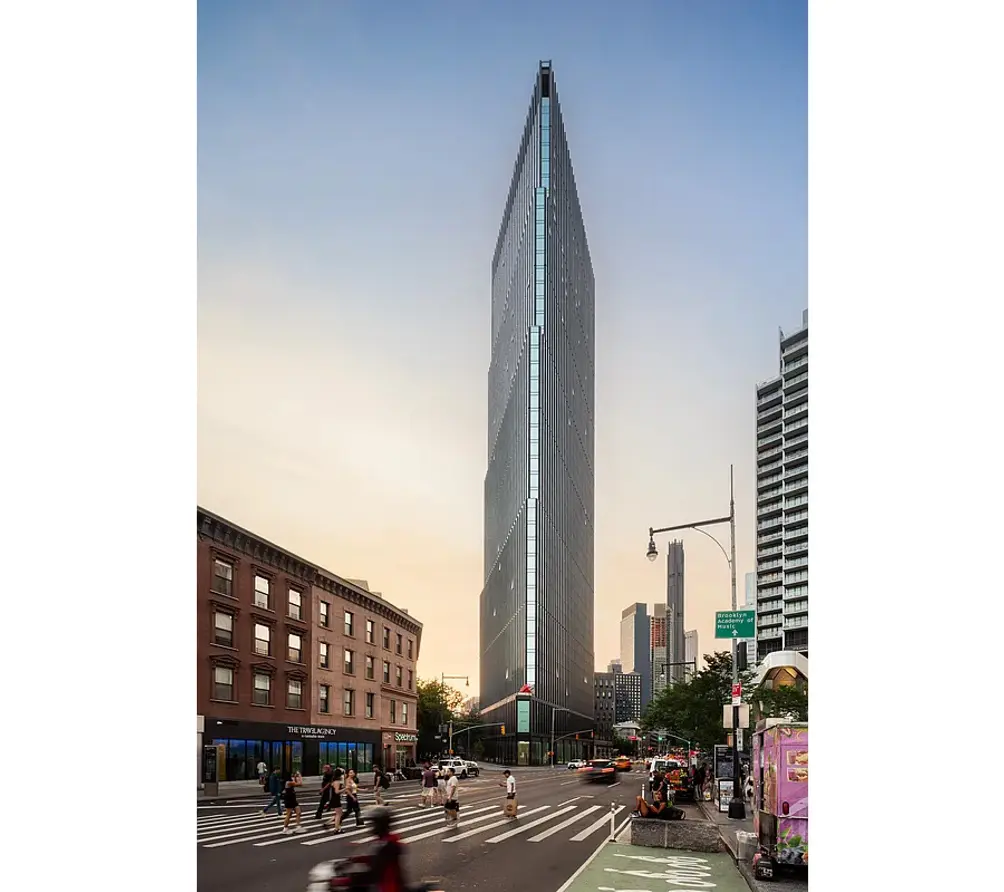 505 State Street (Rose Associates)
505 State Street (Rose Associates)
"Alloy Block" is an ambitious mixed-use project in Downtown Brooklyn, aiming to become the city's first all-electric, fossil fuel-independent project. The first stage is 505 State Street, which has risen from a sharply-angled site at the meeting point of Flatbush Avenue and State Street and bears a striking resemblance to the spirit of 30 Rockefeller Center. This sharp-edge tower houses energy-efficient apartments with thoughtfully sourced natural materials, smart thermostats, and in-unit washers and heat pump dryers.
Leasing is now underway in the building, where amenities include a fitness center with yoga studio, a living room lounge with terrace access, flexible workspace, a Sky Lounge, and a rooftop terrace with cabanas and a rooftop pool. It conspicuously does not include parking as part of an effort to encourage alternative transportation methods, of which there are no shortage in this area.
Leasing is now underway in the building, where amenities include a fitness center with yoga studio, a living room lounge with terrace access, flexible workspace, a Sky Lounge, and a rooftop terrace with cabanas and a rooftop pool. It conspicuously does not include parking as part of an effort to encourage alternative transportation methods, of which there are no shortage in this area.
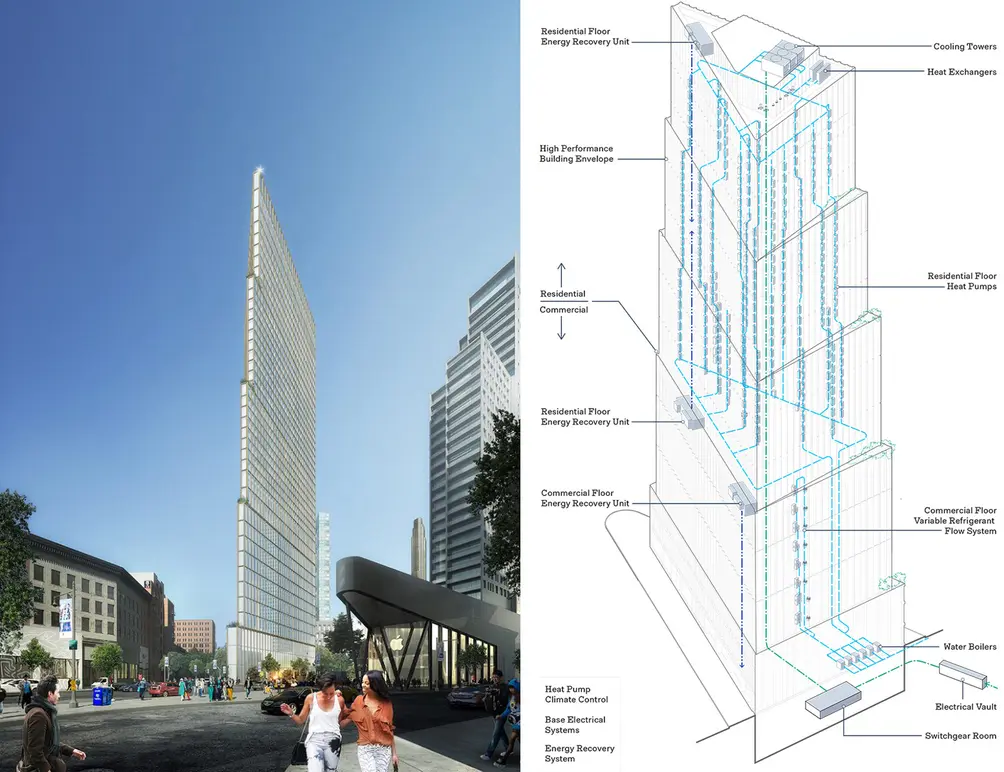 Images credit of Alloy Development
Images credit of Alloy Development
10 floors | 112 units | 2023 | Rental
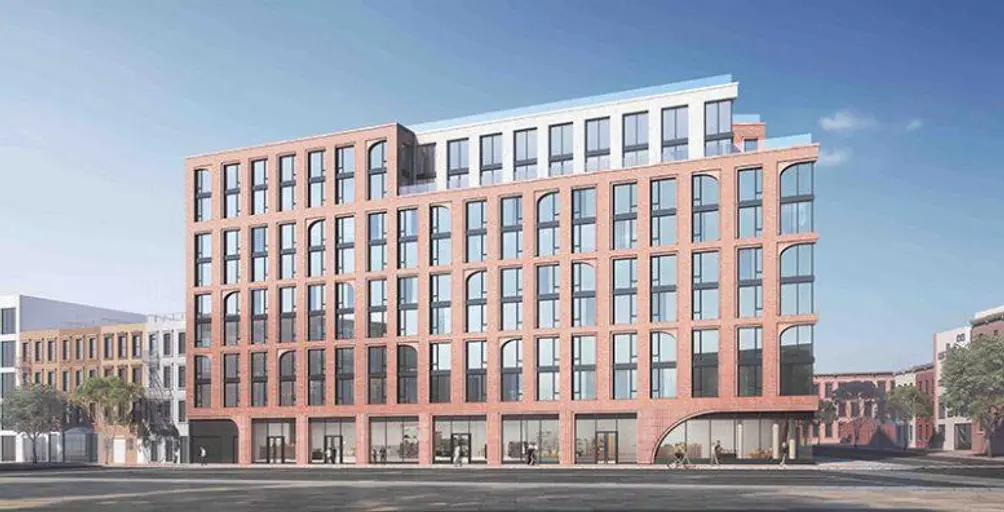 Credit: Fogarty Finger Architects
Credit: Fogarty Finger Architects
115 Broadway
4 floors | 2023 | Retail, office
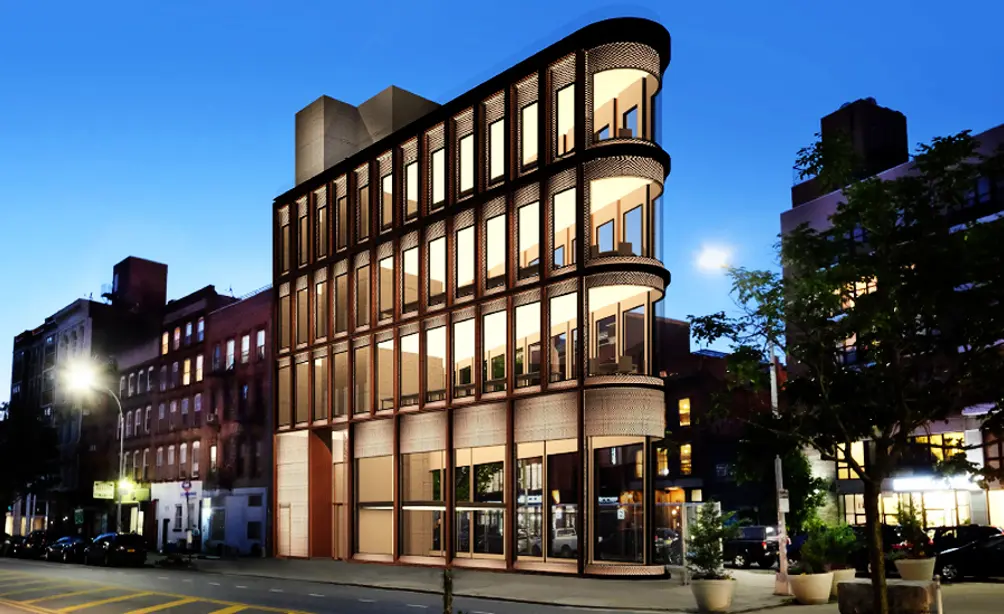 115 Broadway (Cayuga Management Capital)
115 Broadway (Cayuga Management Capital)
In recent years, Williamsburg has received a great share of avant-garde architecture, and now it’s getting some of the “flatiron” variety. Cayuga Management Capital LLC erectec a four-story, wedge-shaped retail and office building at 115 Broadway at the confluence of South 6th Street and Broadway at the foot of the Williamsburg Bridge. A grid of bronze mullions rounds the acute corner in a sleek sweep, complete with floor-to-ceiling curved windows.
In the Pipeline
7 floors | 7 units | Estimated for 2026 | Condominium
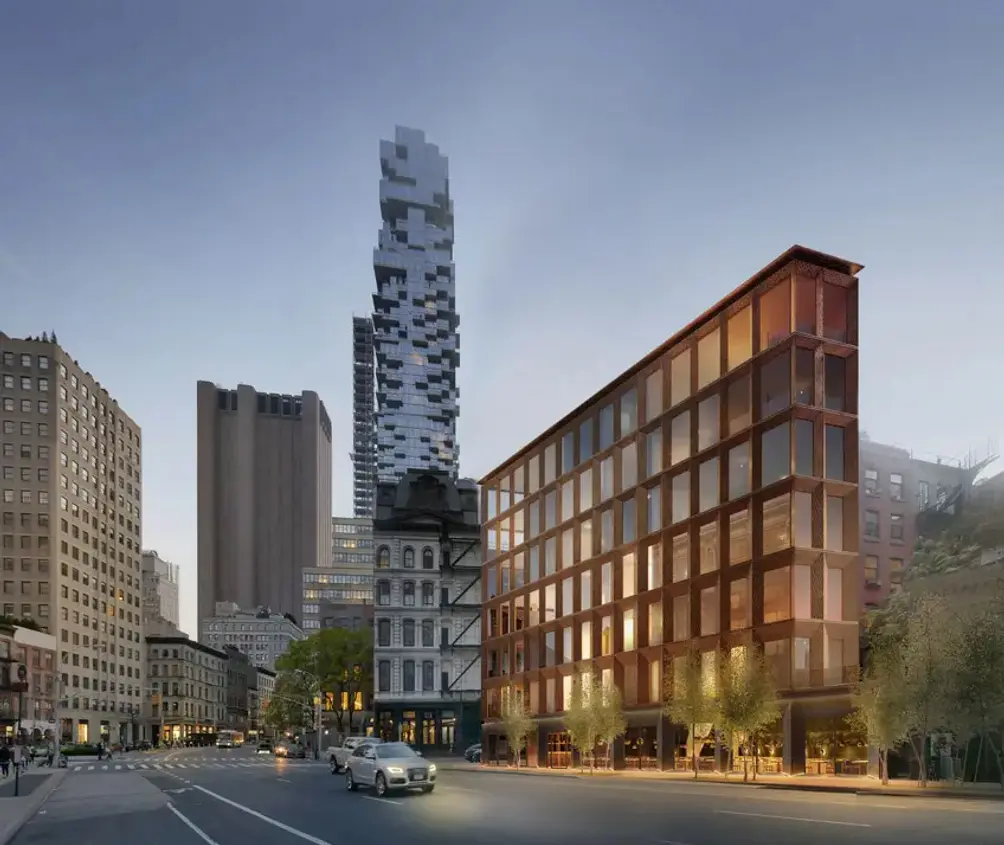 Rendering of 14 White Street (NAVA)
Rendering of 14 White Street (NAVA)
In the heart of the Tribeca East Historic District, 14 White Street has risen on a vacant triangular lot said to be a legacy of the southern extension of Sixth Avenue. Construction has recently topped out, and the building is being constructed to Passive House standards.
The condos inside are said to range from 1,200-square-foot two-bedrooms to approximately 4,000-square-foot full-floor four-bedrooms. An offering plan was filed in late May 2025, but did not list a sellout price or information on the interiors and amenities.
The condos inside are said to range from 1,200-square-foot two-bedrooms to approximately 4,000-square-foot full-floor four-bedrooms. An offering plan was filed in late May 2025, but did not list a sellout price or information on the interiors and amenities.
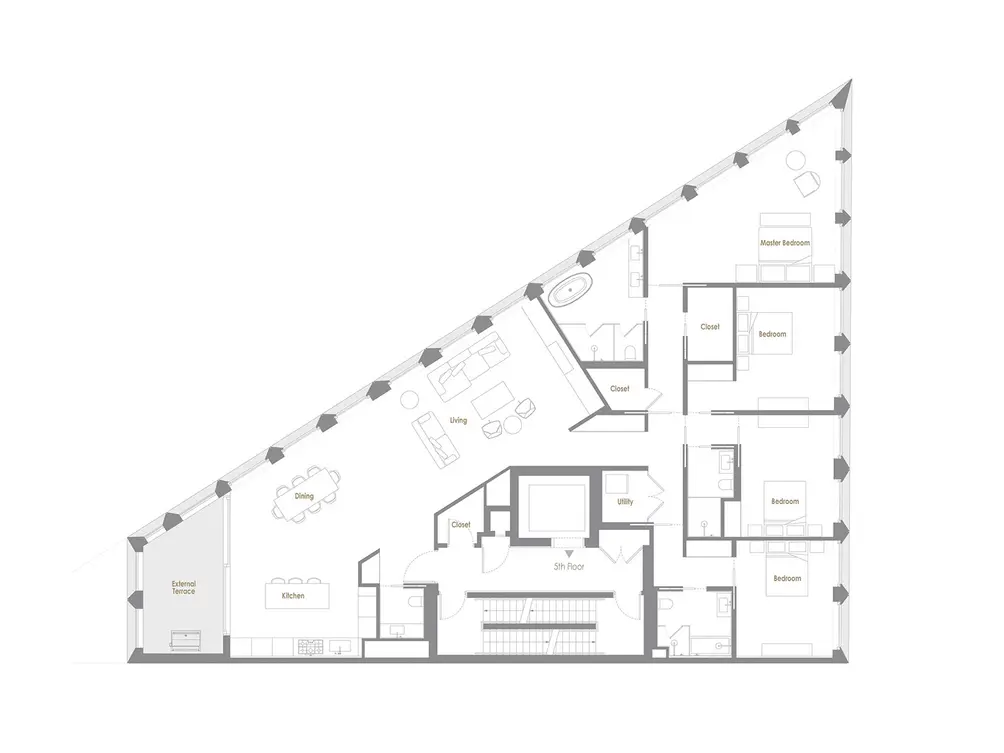 Full-floor unit floor plan (NAVA)
Full-floor unit floor plan (NAVA)
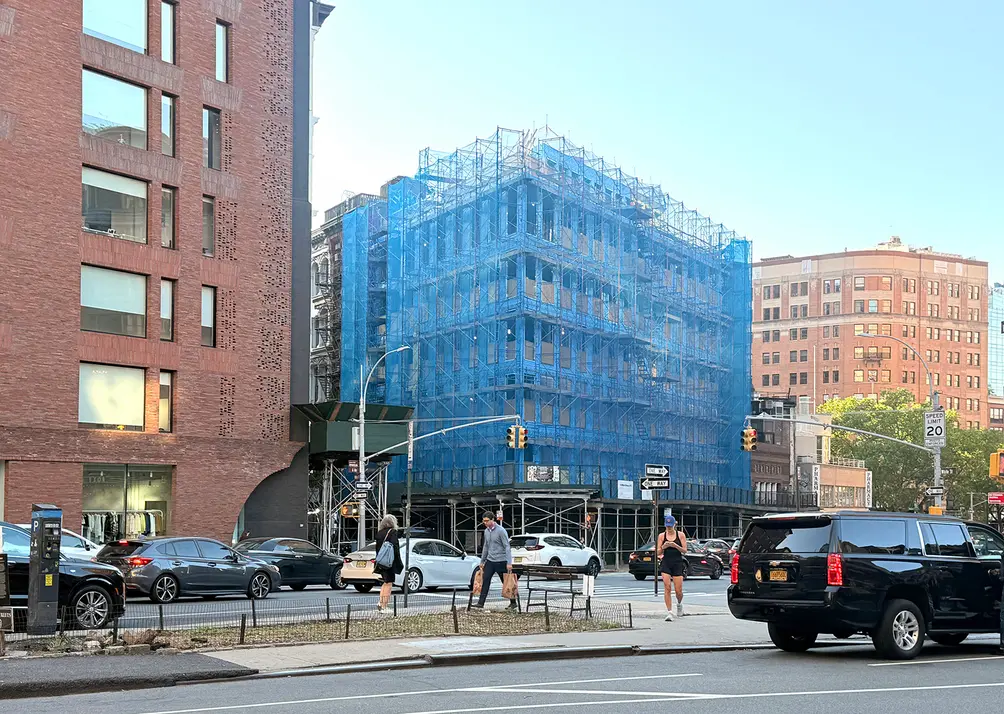 14 White Street, June 2025 (CityRealty)
14 White Street, June 2025 (CityRealty)
675 Hudson Street
5 floors | Completion TBD | Retail, office
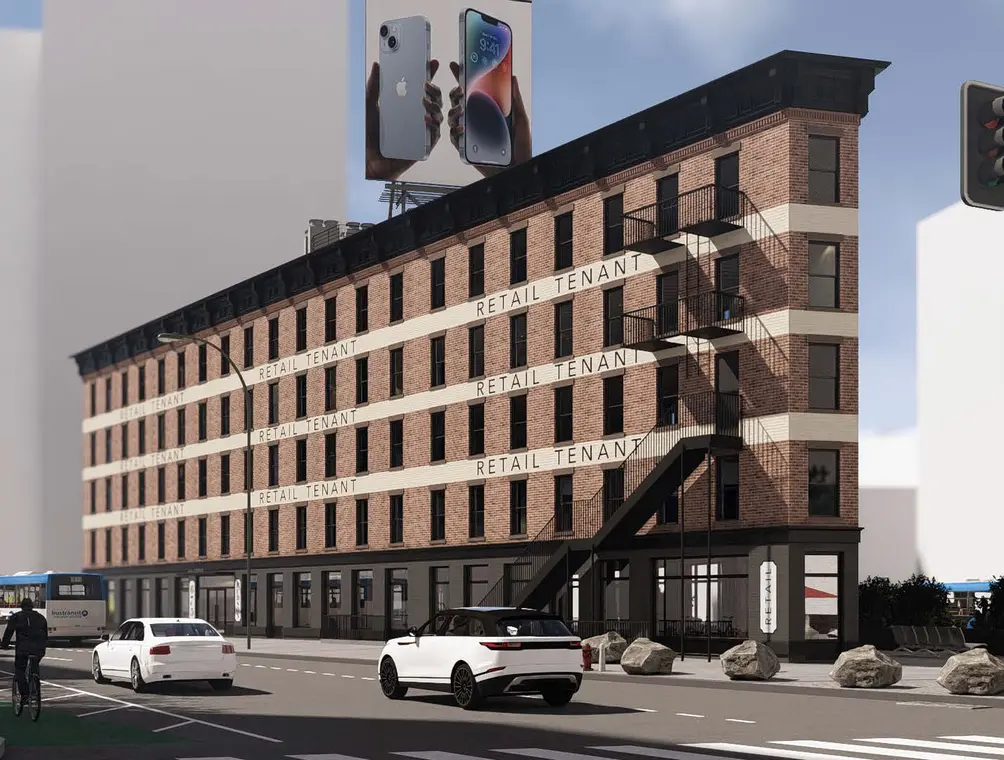 675 Hudson Street (Mancini)
675 Hudson Street (Mancini)
In 2024, the Landmarks Preservation Commission reviewed a renovation proposal for 675 Hudson Street, a five-story factory building located in the Gansevoort Market Historic District, at the nexus of the West Village and the Meatpacking District. In addition to restoring the building's existing cornices, lintels, and sills, the owners sought to add marquees, install rooftop equipment, repaint the ground floor to unify the building's appearance, and add painted signage. The project was approved with modifications in May 2024, and work is currently underway.
Historic Mention
21 floors | 1908 - 1971 | Office
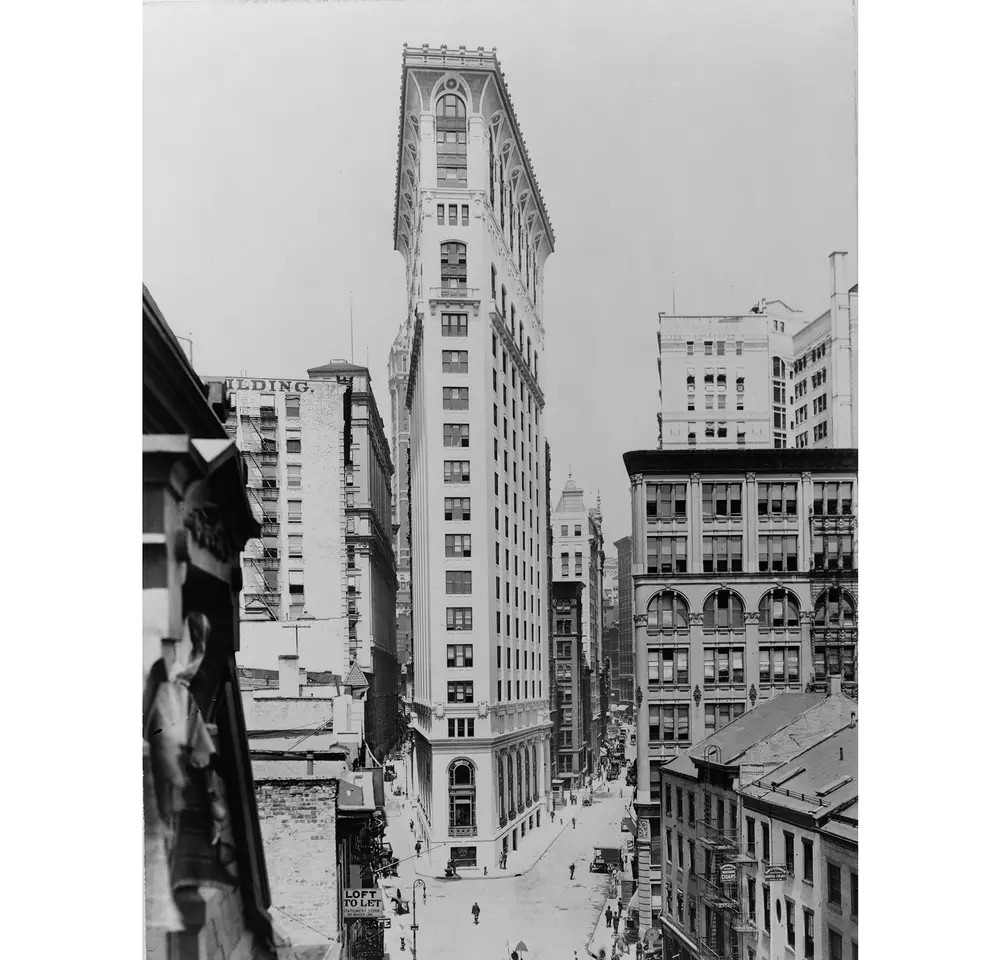 German American Life Insurance Building (demolished)(Credit: Irving Underhill via Library of Congress)
German American Life Insurance Building (demolished)(Credit: Irving Underhill via Library of Congress)
Unfortunately, one of the city’s greatest wedge-shaped buildings no longer stands. In 1908, the German-American Insurance Company erected a 21-story office building at 68 Maiden Lane, deep within the dense tower thickets of Lower Manhattan on a narrow wedge of land at the confluence of Liberty Street and Maiden Lane.
The architecture firm of Hill & Stout composed a less ornate design than that of the similarly-sized Flatiron Building; however, its arched, vaulted, concave cornice of polychrome terra-cotta was among the finest and most unique of the kind in all of New York. The preservation-worthy building bit the dust in 1971 in order to widen the adjacent streets, at a time when bringing more, rather than fewer, cars to Downtown’s alley-like streets still seemed like sound urban planning.
Today, Louise Nevelson Plaza, a small public space in place of the soaring edifice, remains as the city’s consolation prize for the architectural loss, while the closest stylistic kin to the vaulted cornice may be found atop The Adlon in Midtown.
The architecture firm of Hill & Stout composed a less ornate design than that of the similarly-sized Flatiron Building; however, its arched, vaulted, concave cornice of polychrome terra-cotta was among the finest and most unique of the kind in all of New York. The preservation-worthy building bit the dust in 1971 in order to widen the adjacent streets, at a time when bringing more, rather than fewer, cars to Downtown’s alley-like streets still seemed like sound urban planning.
Today, Louise Nevelson Plaza, a small public space in place of the soaring edifice, remains as the city’s consolation prize for the architectural loss, while the closest stylistic kin to the vaulted cornice may be found atop The Adlon in Midtown.
Would you like to tour any of these properties?
Just complete the info below.
Or call us at (212) 755-5544
Would you like to tour any of these properties?

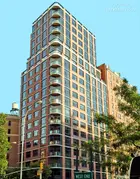
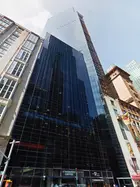

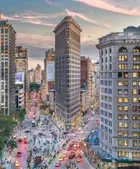
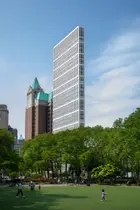
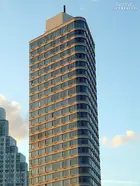

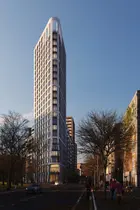
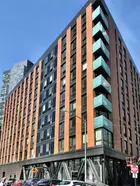



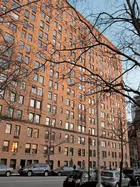
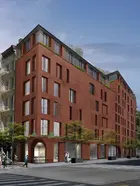
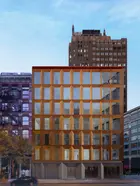
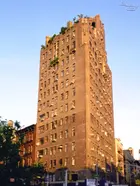
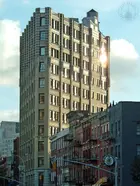
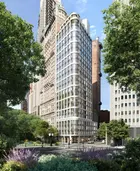
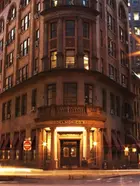
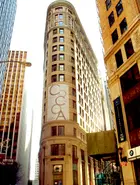

 6sqft delivers the latest on real estate, architecture, and design, straight from New York City.
6sqft delivers the latest on real estate, architecture, and design, straight from New York City.
